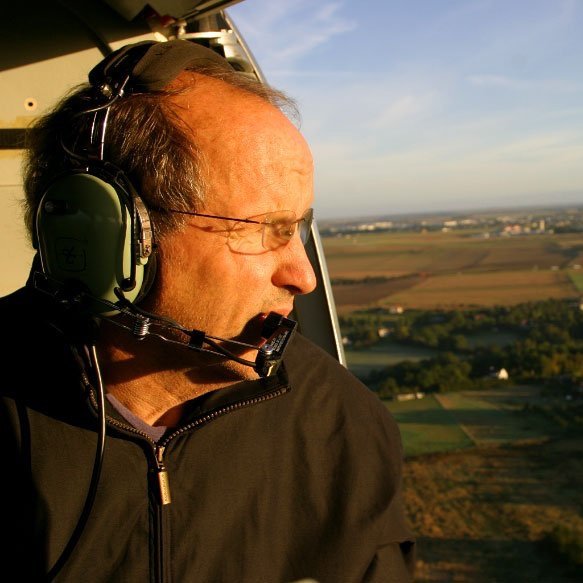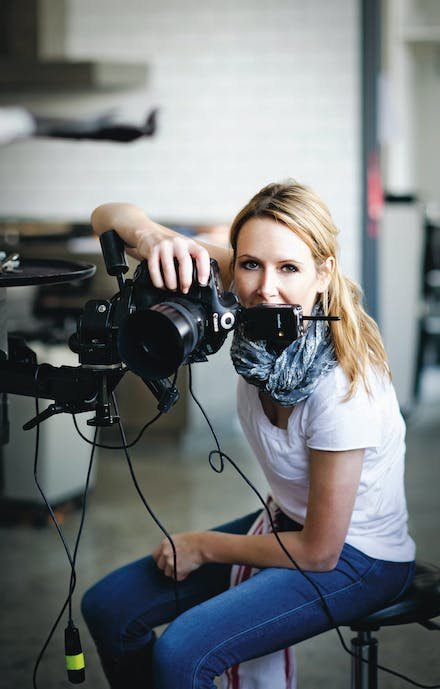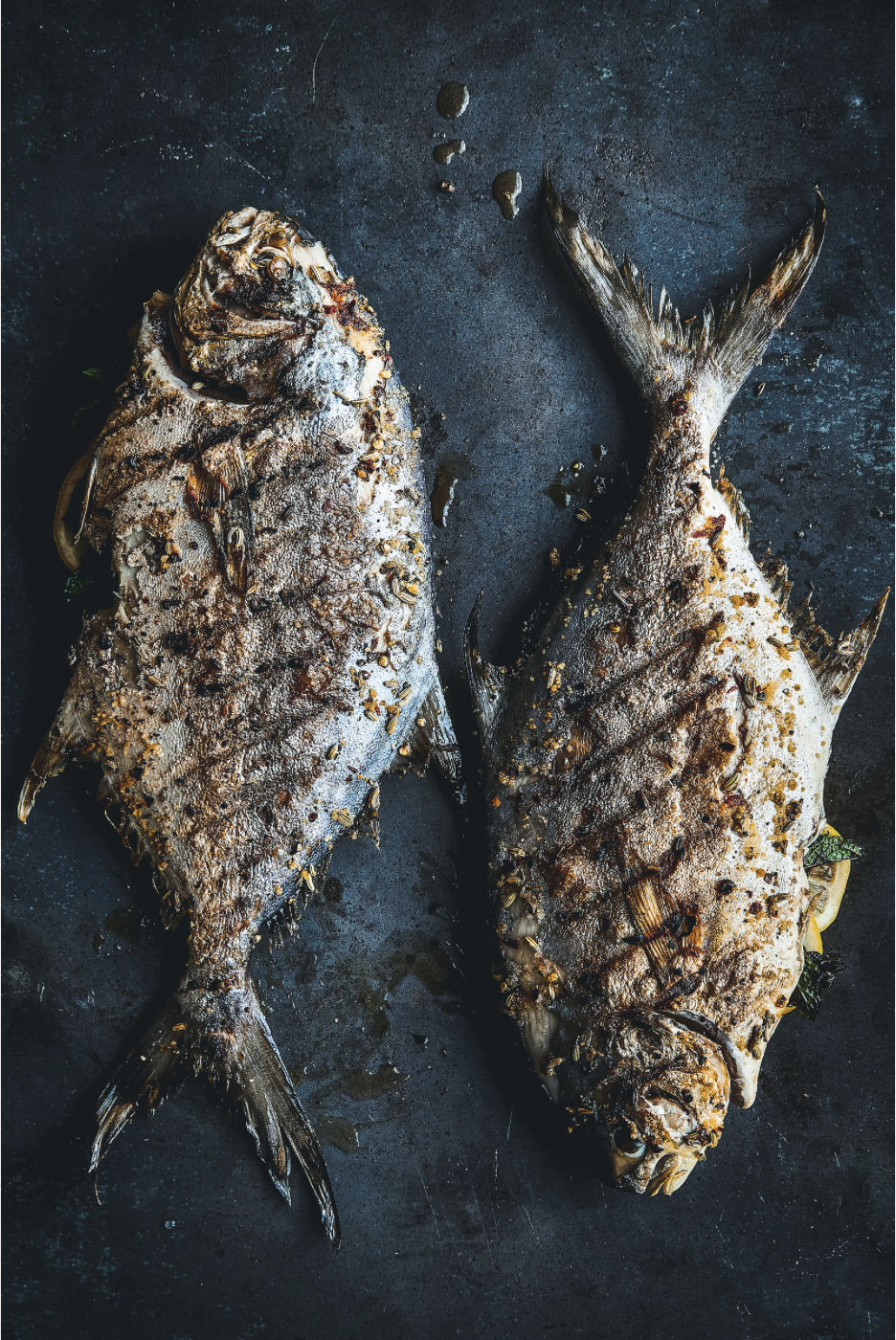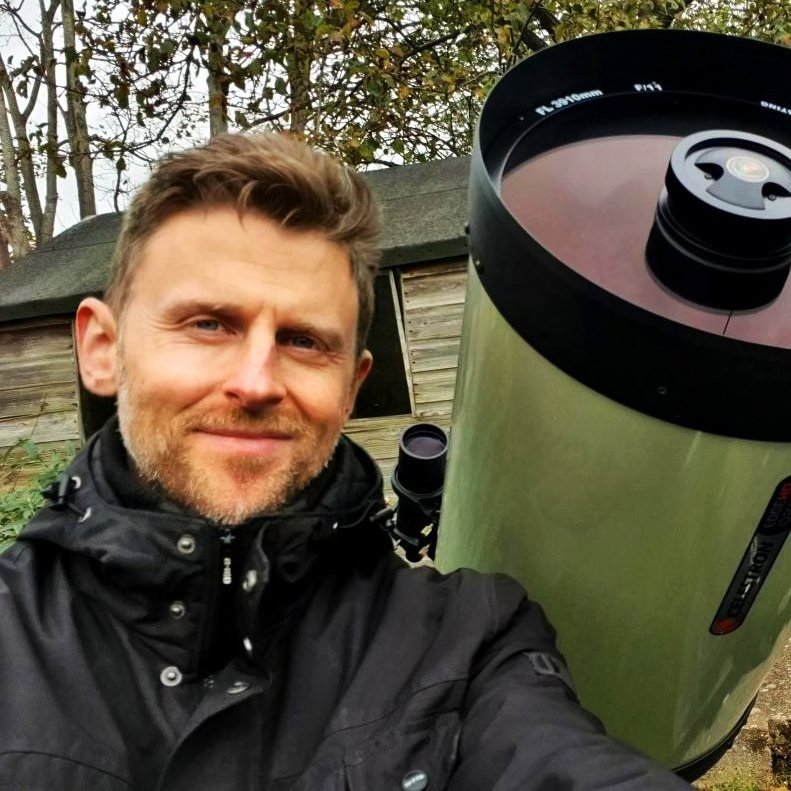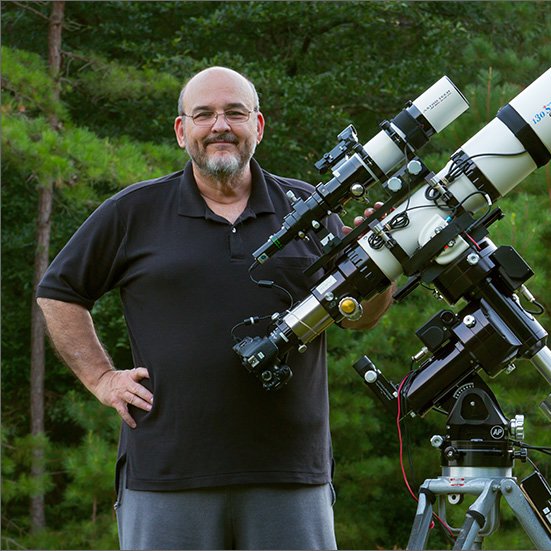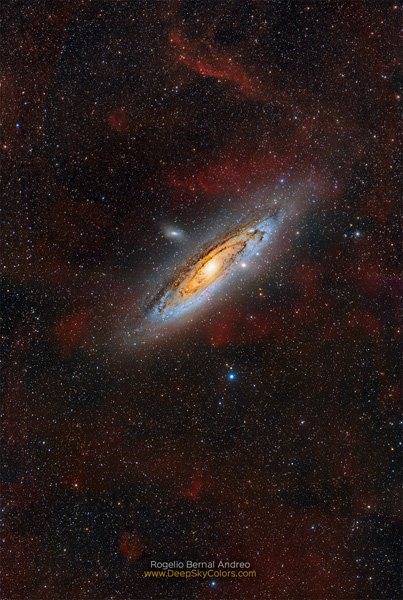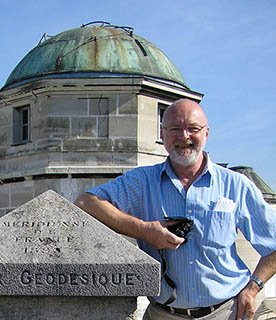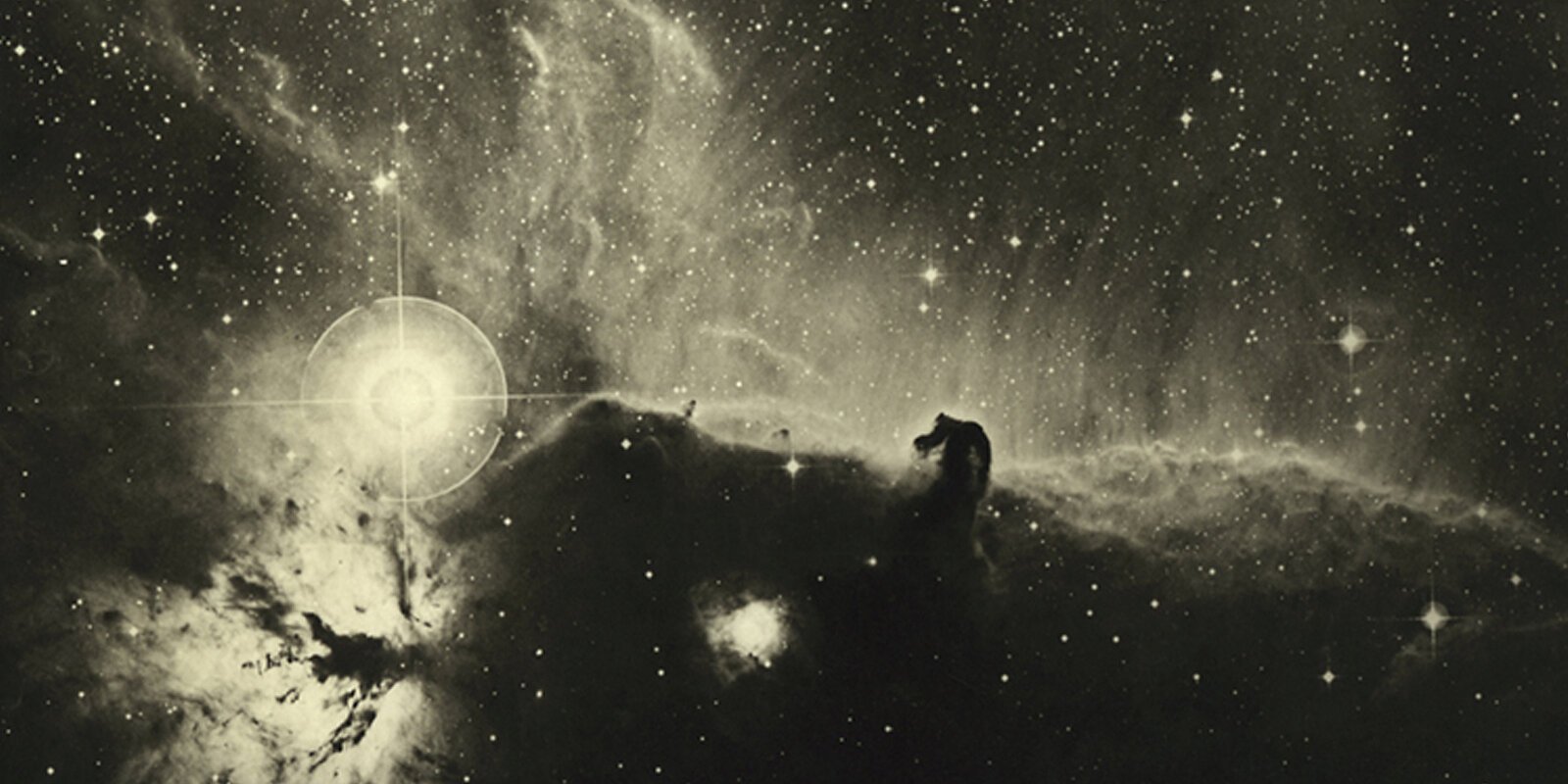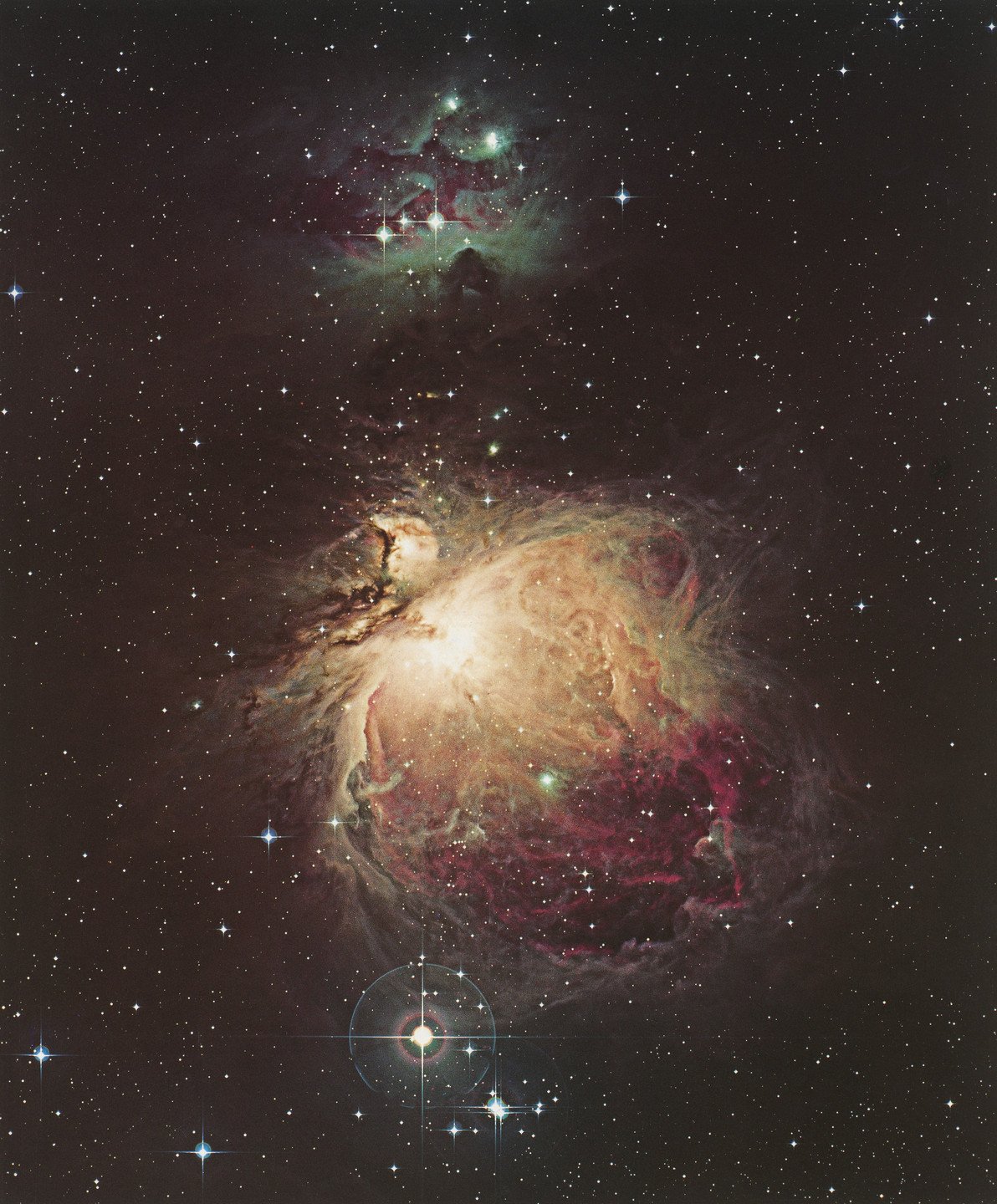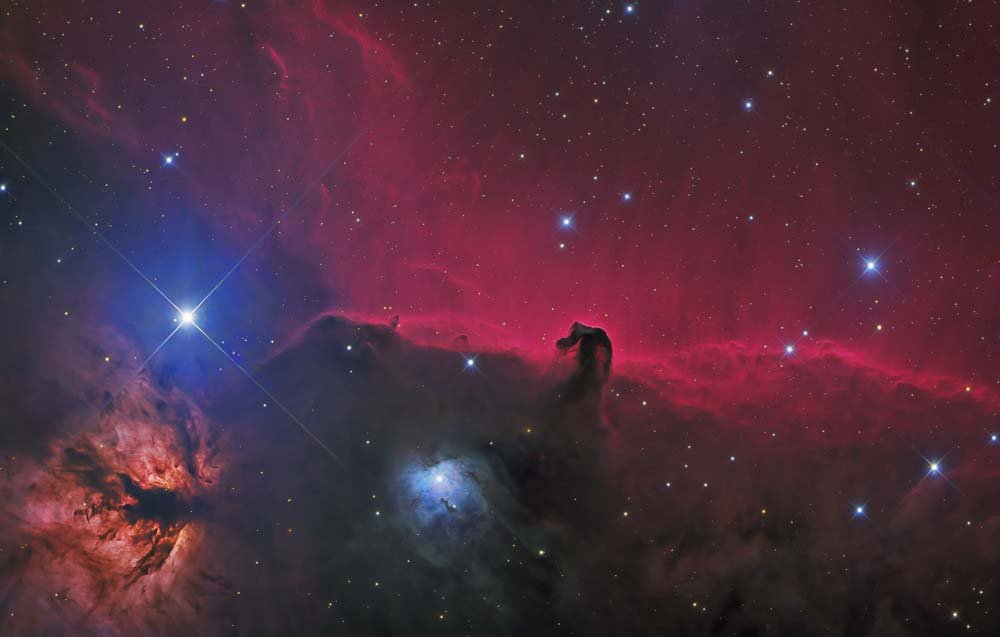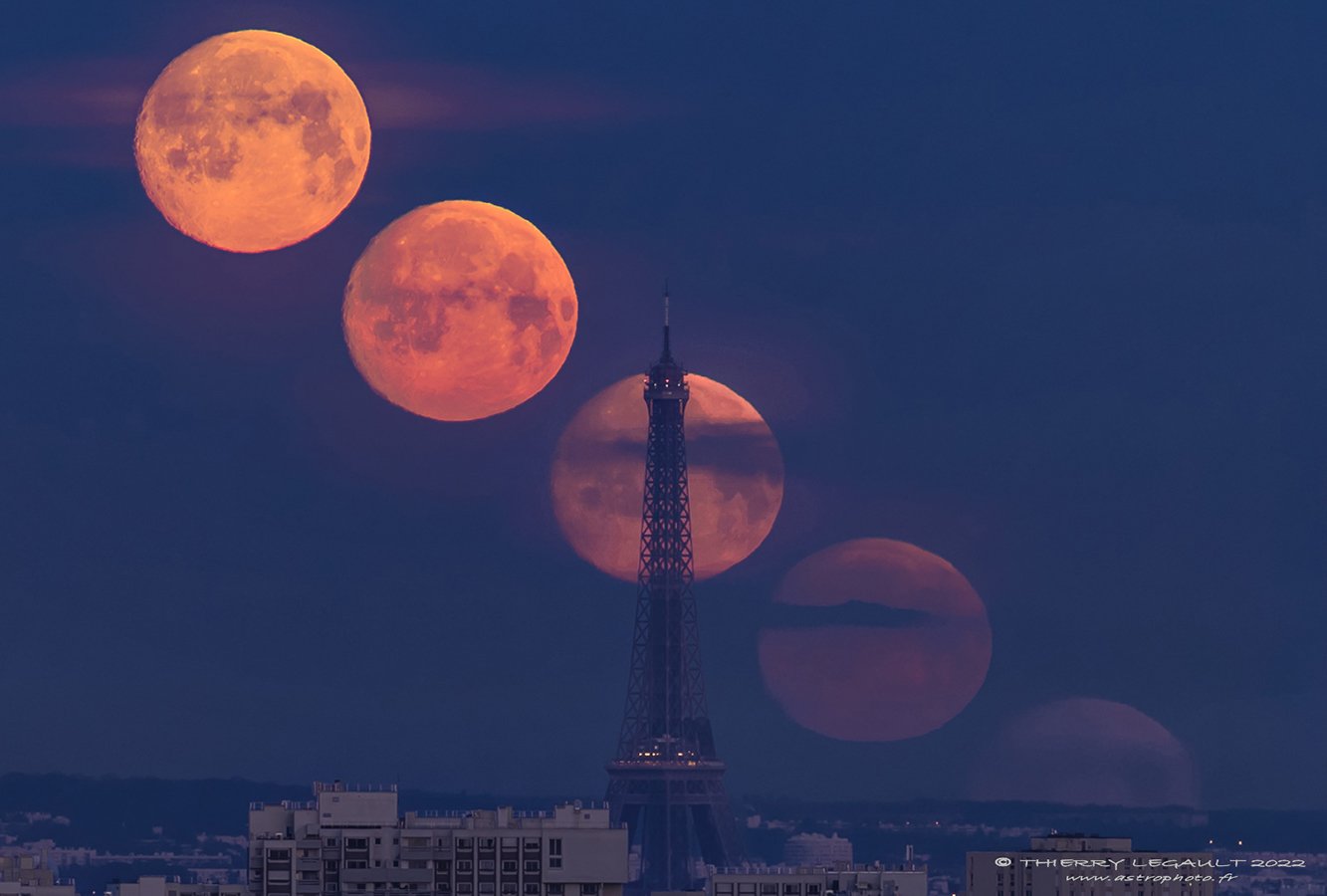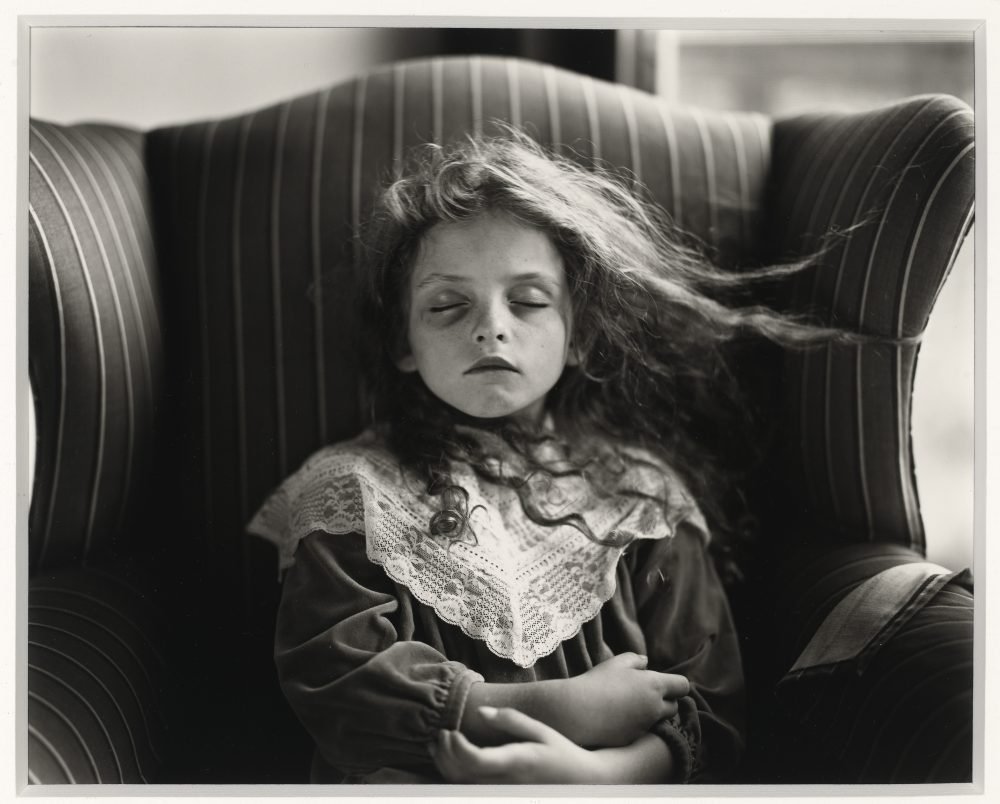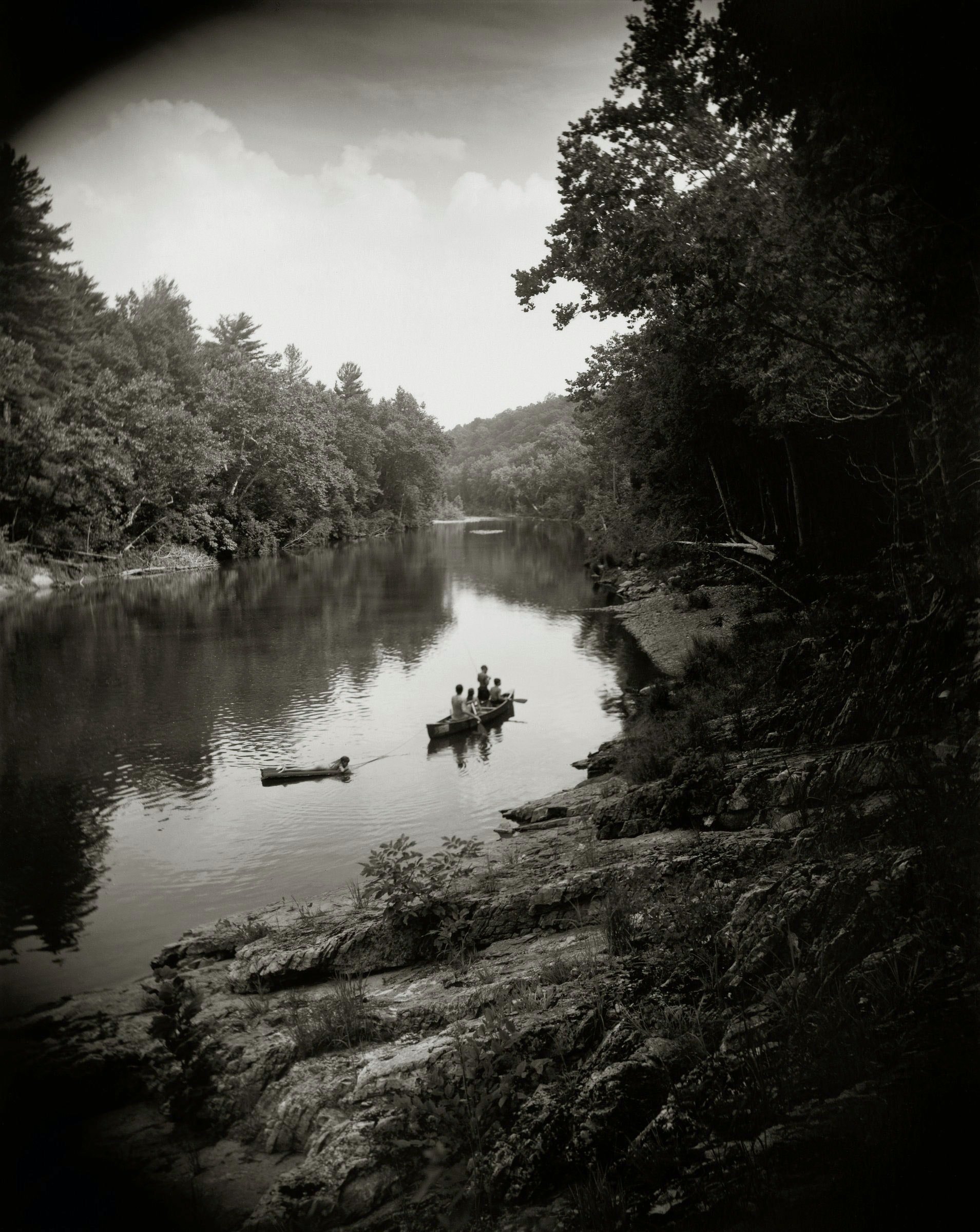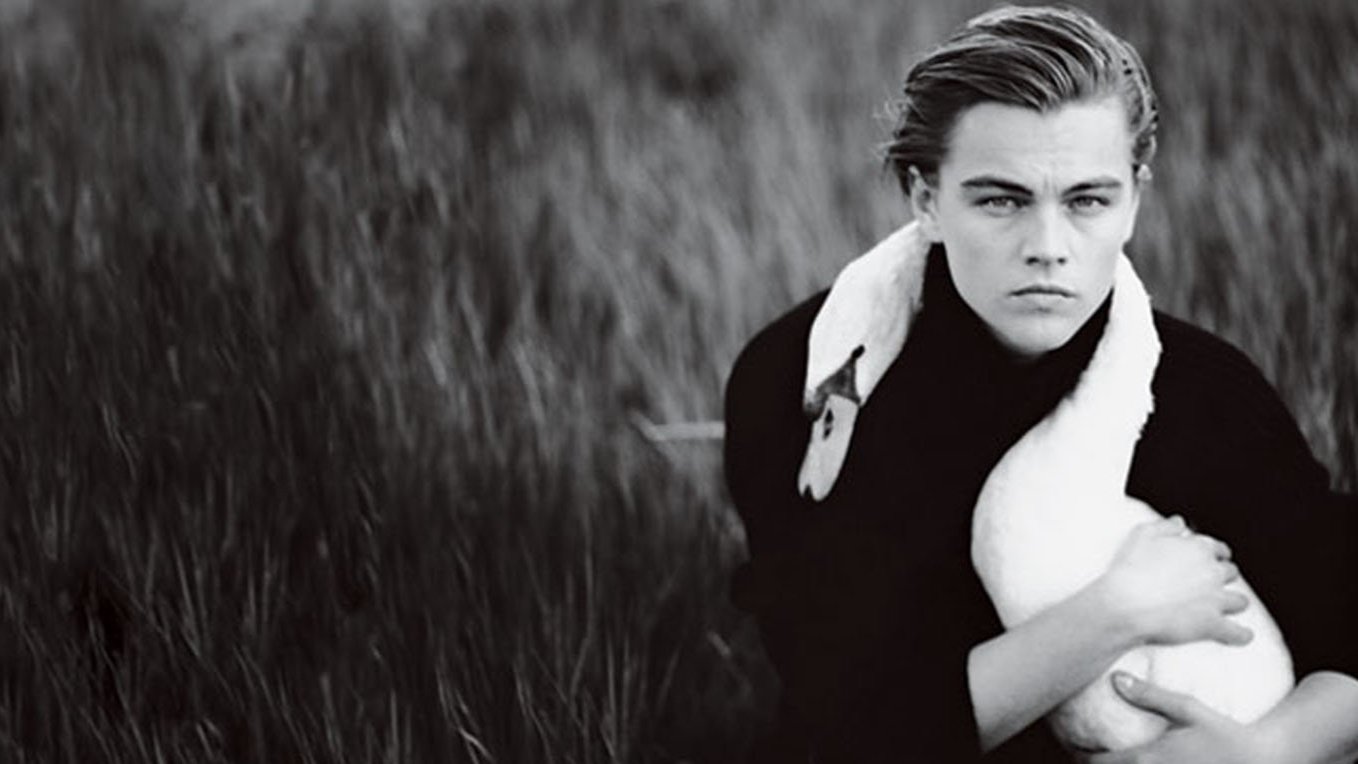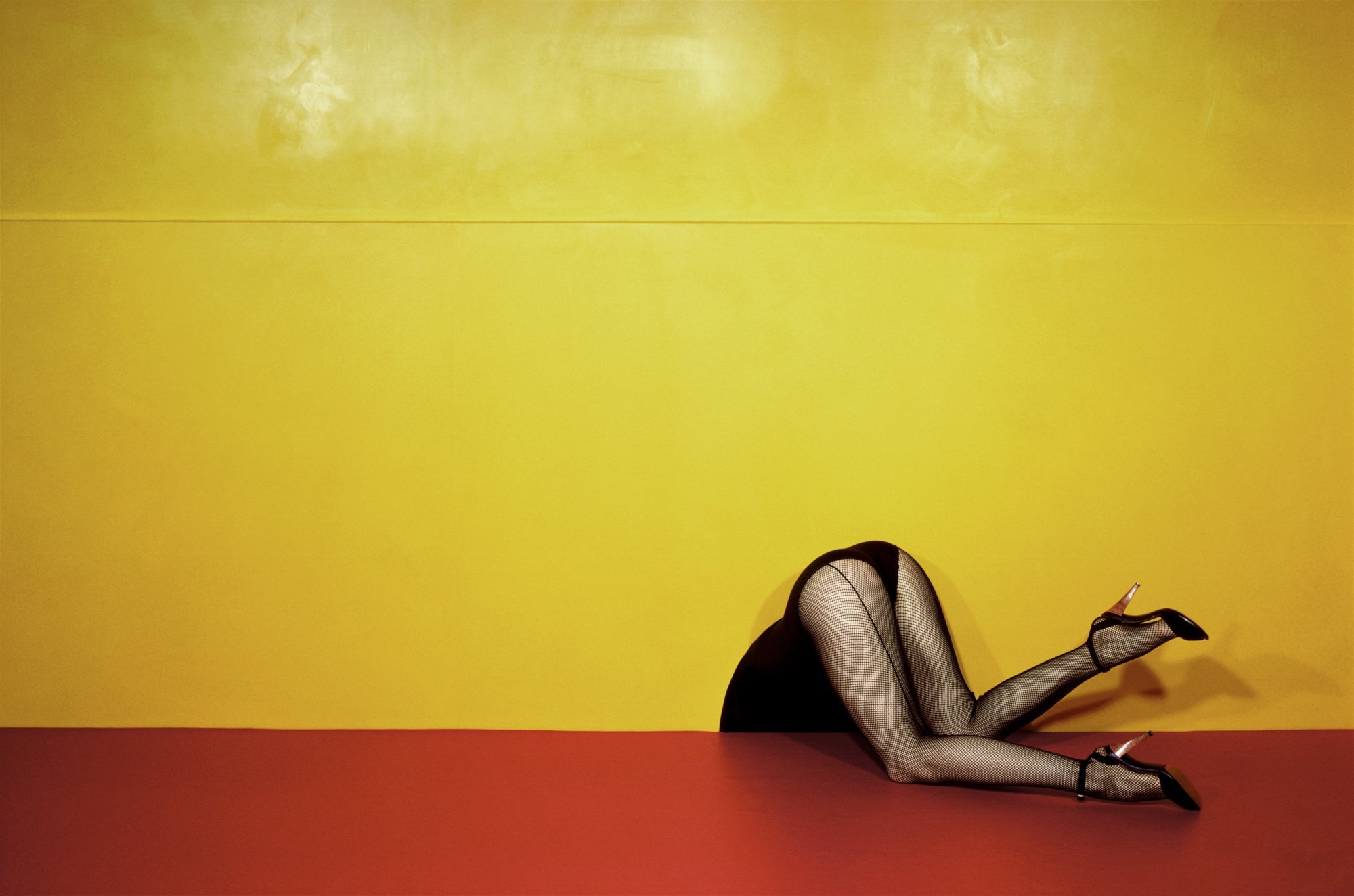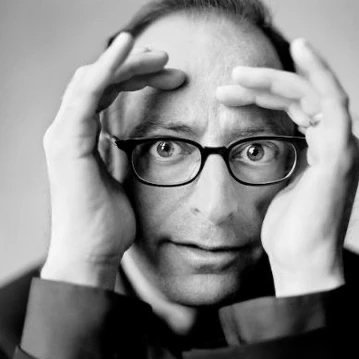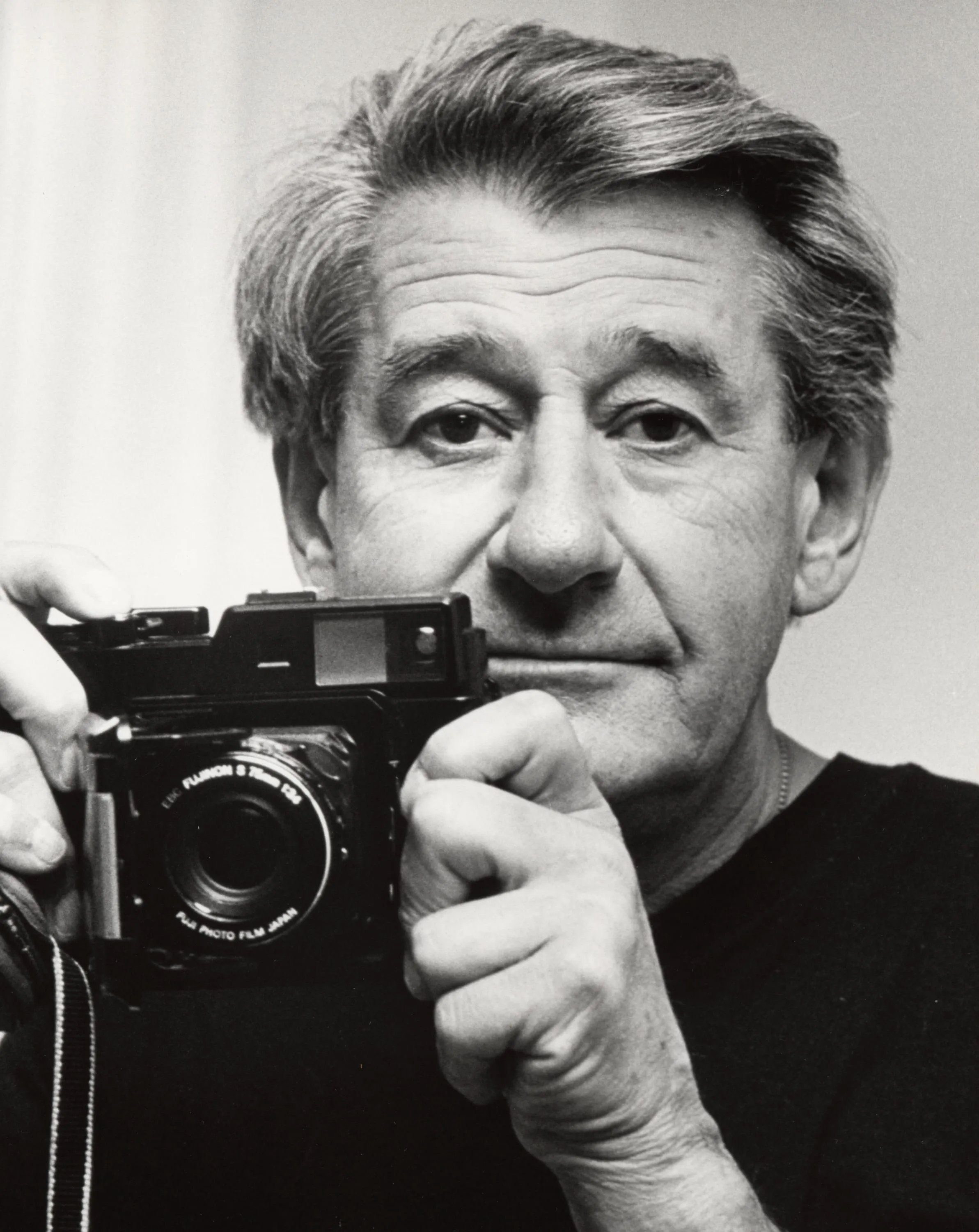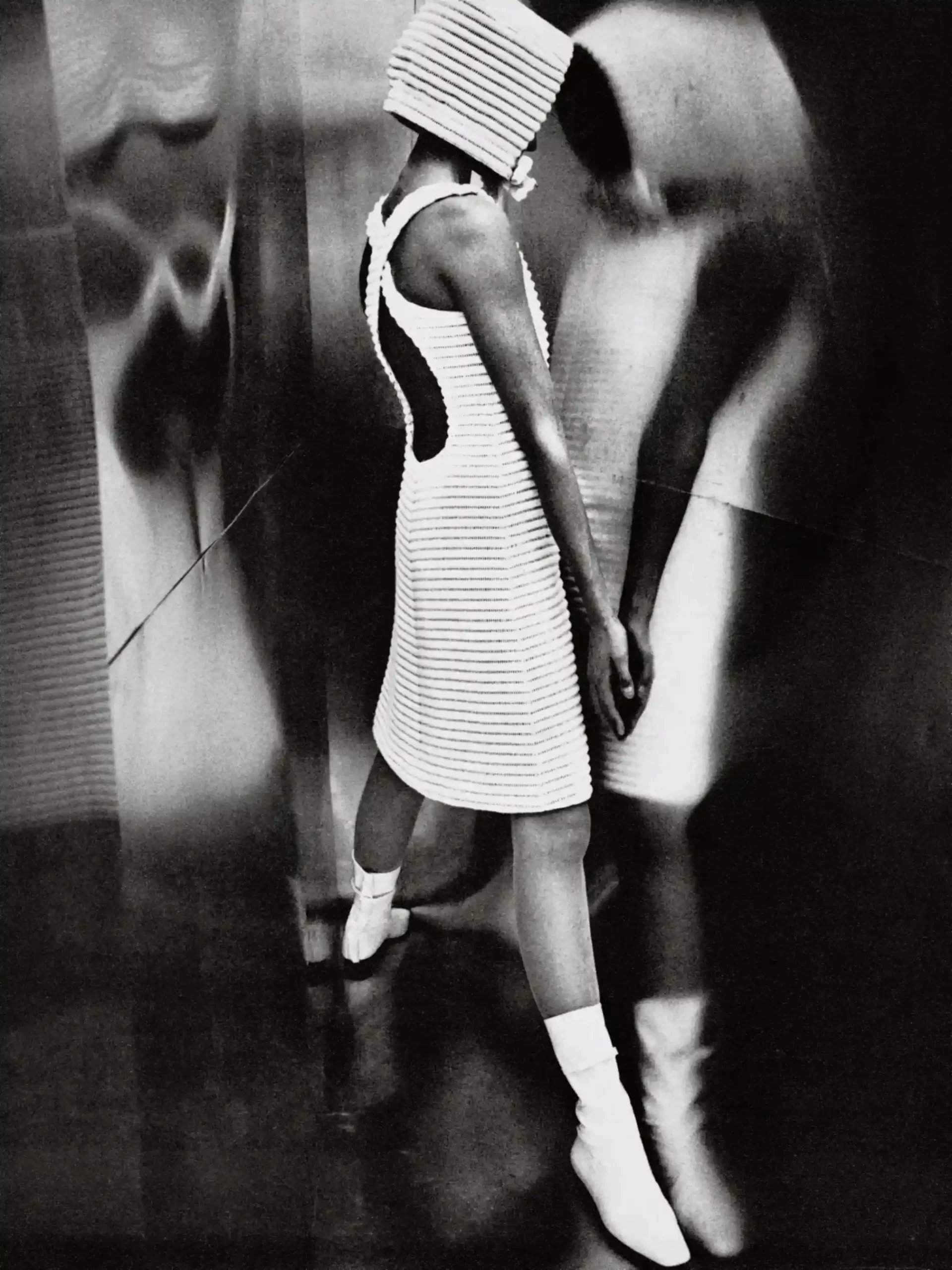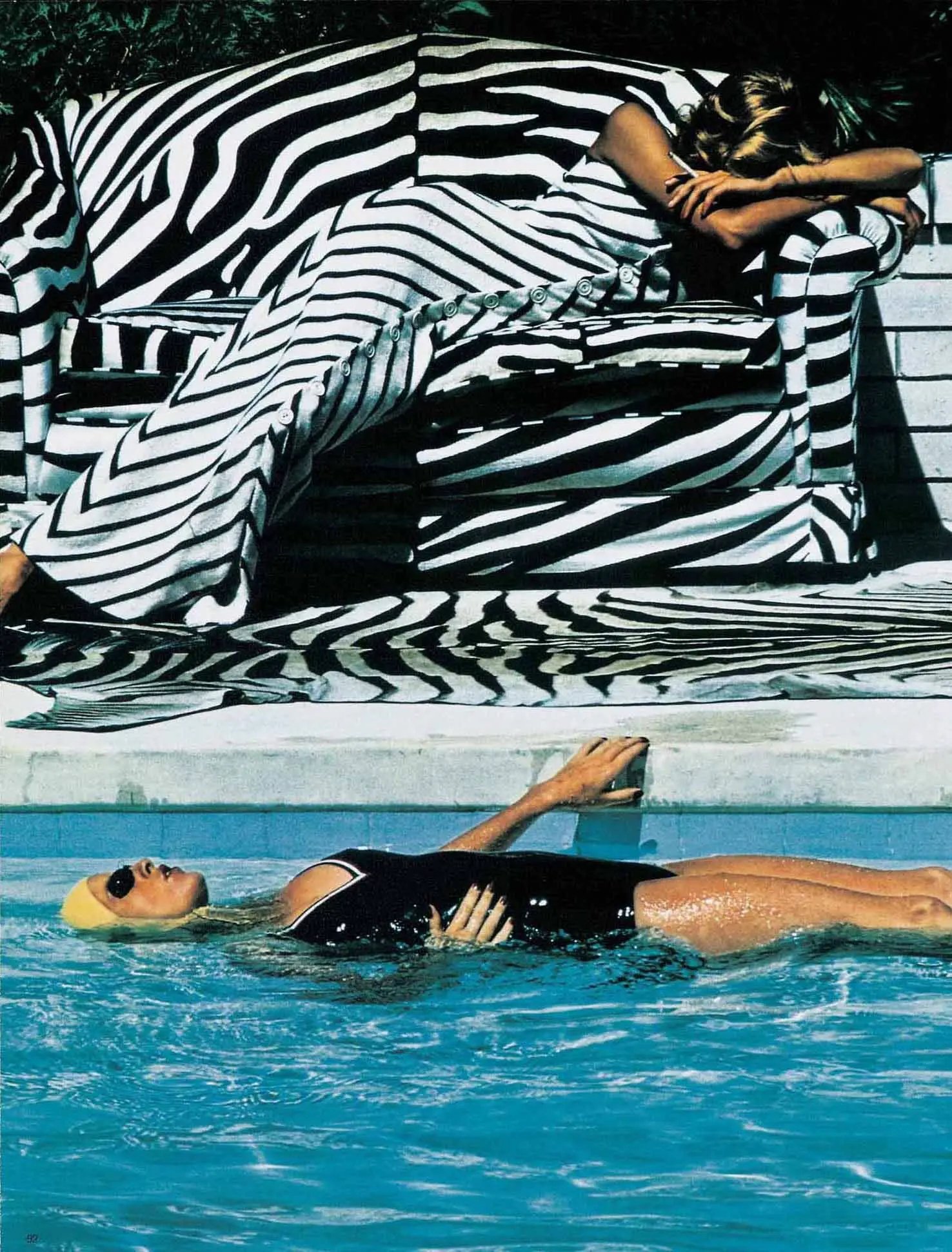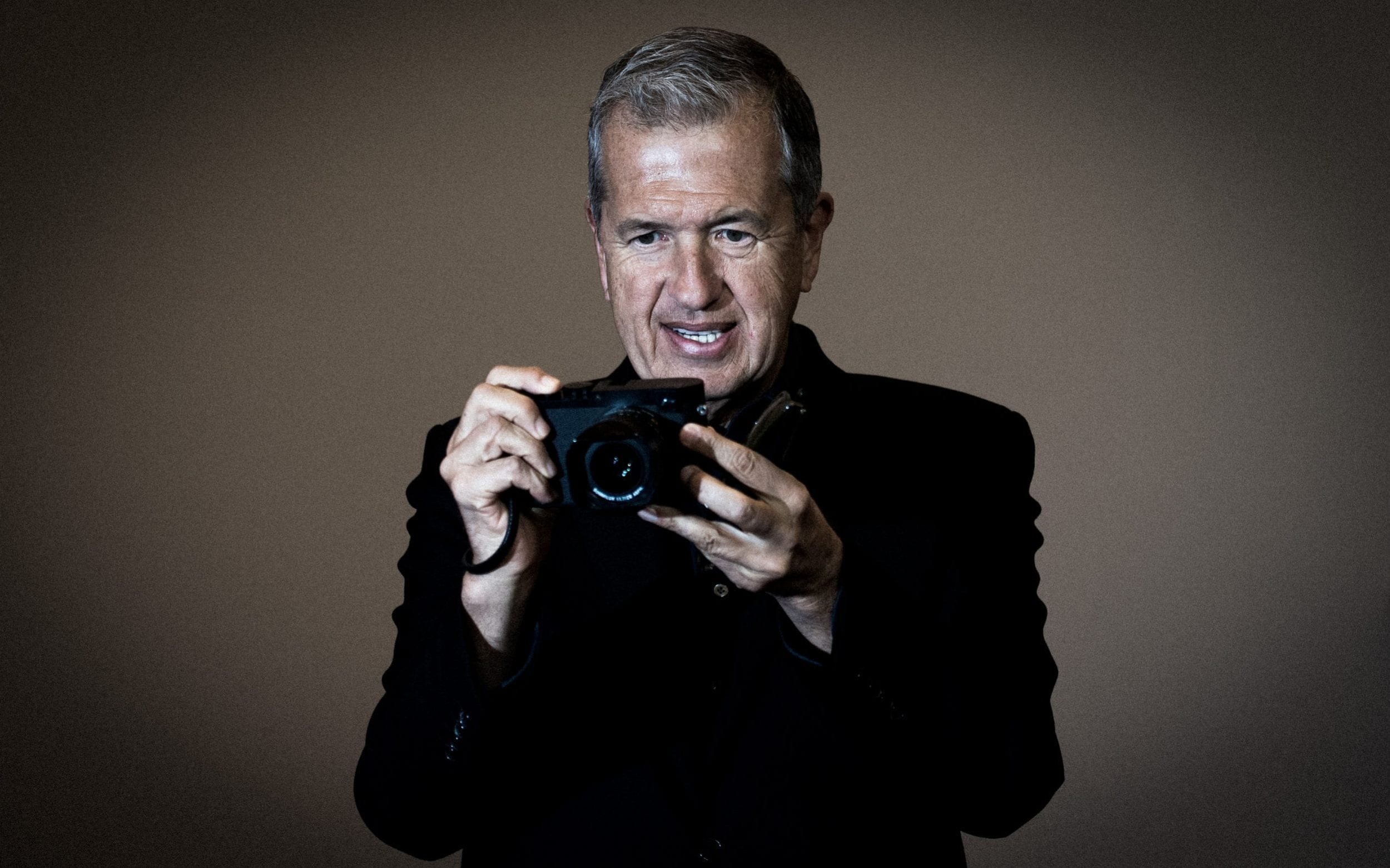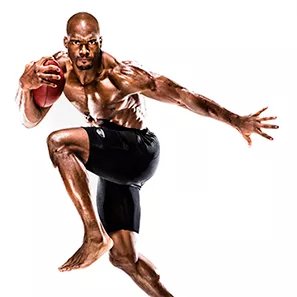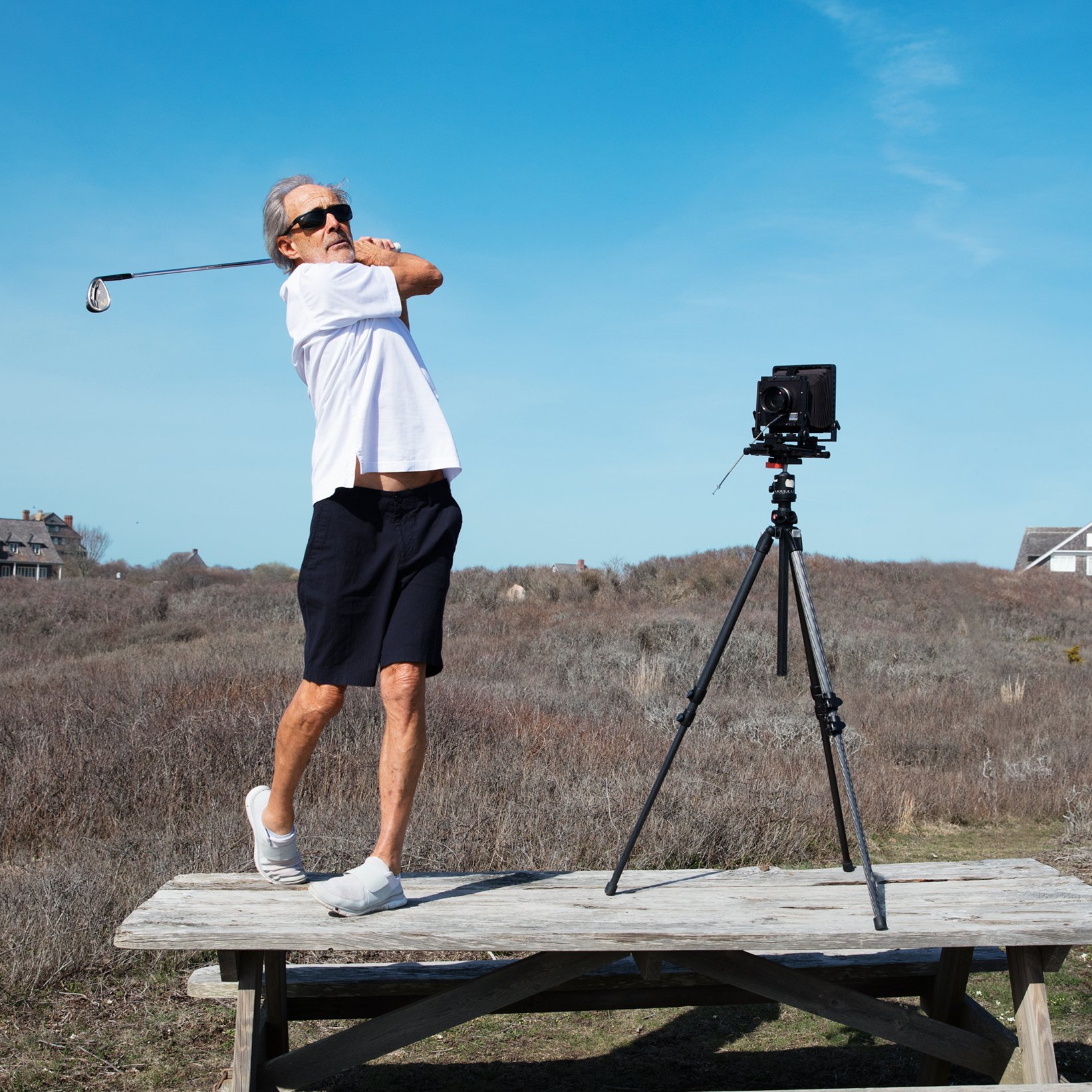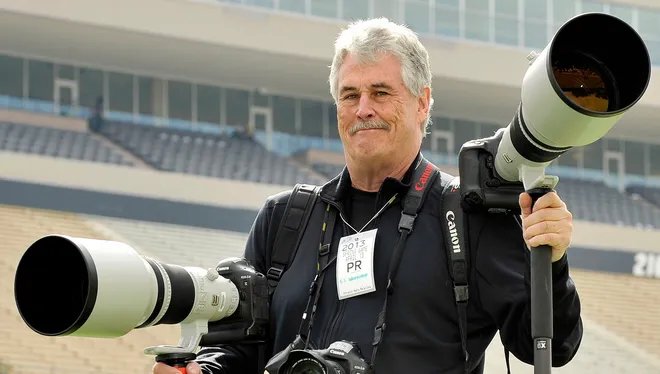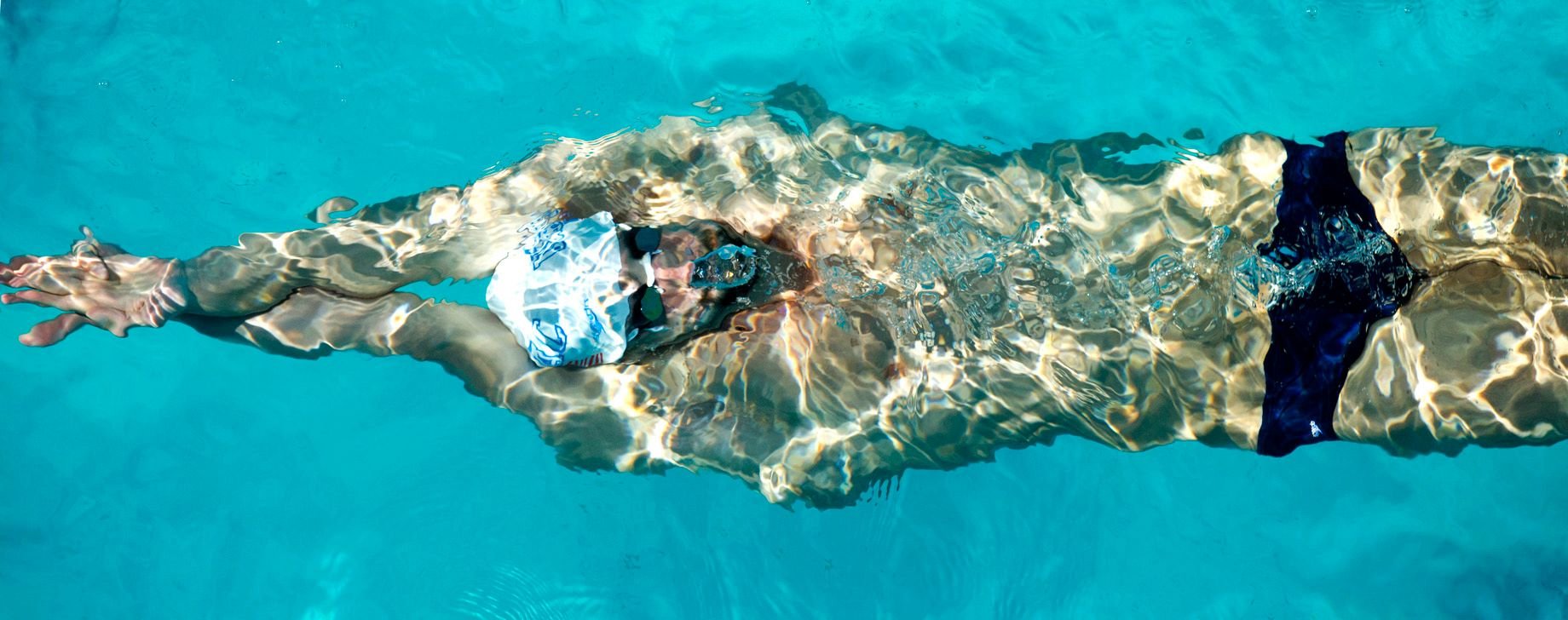George Steinmetz
“The sky is not the limit; it's just the beginning of a new adventure."
George Steinmetz is a renowned aerial photographer known for his breathtaking images that capture the world from a bird's-eye view. His work has been featured in numerous publications, including National Geographic, The New York Times Magazine, and Smithsonian. With a passion for exploration and a dedication to capturing the beauty of our planet, Steinmetz's photography offers a unique perspective on the world around us.
Early Life and Career
George Steinmetz was born in 1957 in Beverly Hills, California. He developed a love for photography during his college years at Stanford University, where he studied geophysics. After graduating, Steinmetz embarked on a solo journey across Africa, which fueled his passion for both travel and photography.
Steinmetz's career took off after he began experimenting with aerial photography in the late 1980s. He developed a unique method of capturing images using a motorized paraglider, allowing him to access remote and hard-to-reach locations. Over the years, he has honed his skills and built an impressive portfolio that showcases the diversity and beauty of our planet.
Photographic Style and Techniques
George Steinmetz is best known for his aerial photography, which offers a unique perspective on the world's landscapes and natural wonders. He often captures his subjects from low altitudes, providing a sense of intimacy and detail that sets his work apart from traditional aerial photography. Steinmetz's images are characterized by their stunning compositions, vibrant colors, and striking contrasts.
Career Highlights
Throughout his illustrious career, Steinmetz has received numerous awards and accolades for his photography. Some of his most notable achievements include:
Four-time winner of the prestigious World Press Photo award
Recipient of the National Magazine Award for Photography
Named a National Geographic Explorer of the Year
In addition to his many awards, Steinmetz's work has been exhibited in galleries and museums worldwide, further cementing his status as a leading figure in aerial photography.
Photography Gear
George Steinmetz's photography gear is tailored to his unique approach to aerial photography. Some of the key equipment he uses includes:
Motorized paraglider: Steinmetz's custom-built paraglider allows him to access remote locations and capture stunning aerial images with ease.
DSLR camera: Steinmetz often uses high-quality DSLR cameras, such as the Canon EOS 5D Mark IV, for their exceptional image quality and versatility.
Wide-angle lenses: To capture the expansive landscapes he photographs, Steinmetz typically relies on wide-angle lenses, such as the Canon EF 16-35mm f/2.8L II USM.
Photography Books
"The Human Planet: Earth at the Dawn of the Anthropocene" provides a compelling look at the impact of human activity on Earth, as seen through George Steinmetz's aerial photography. This book offers valuable insights into environmental issues and serves as a source of inspiration for photographers interested in capturing the relationship between humans and the planet.
In "New York Air: The View from Above", George Steinmetz showcases his mastery of aerial photography, capturing the iconic cityscapes of New York from a unique perspective. This book is a valuable resource for photographers looking to learn techniques for capturing urban environments from above and finding inspiration in cityscapes.
"Desert Air" is a visual exploration of the world's most remote and fascinating deserts, captured through George Steinmetz's aerial photography. This book provides a wealth of inspiration for photographers looking to convey the beauty and mystery of these vast landscapes, while offering unique insights into the challenges of photographing such environments.
Lastly, "Empty Quarter: A Photographic Journey to the Heart of the Arabian Desert" showcases George Steinmetz's extraordinary ability to capture the beauty of the Arabian Desert's landscapes and people. This book serves as a valuable resource for photographers seeking to explore and document the unique aspects of this captivating region.
Quotes
Here are five inspiring quotes from George Steinmetz that provide insight into his passion for photography:
"I'm always looking for a new way to see the world and a new way to see the familiar."
"The best way to see the Earth is to fly over it."
"I think there's a lot of beauty in the world, and I think it's important to share it."
"Aerial photography offers a unique perspective that can change the way we perceive our planet."
“The sky is not the limit; it's just the beginning of a new adventure."
Legacy and Influence
George Steinmetz has made a significant impact on the world of photography, particularly in the field of aerial photography. His innovative techniques and passion for capturing the world from above have inspired countless photographers to explore new perspectives and push the boundaries of their craft.
Other notable photographers with similar style are:
Vincent Laforet: Known for his stunning aerial images of cities around the world, Laforet has gained widespread recognition for his unique approach to photography.
Tommy Clarke: A British aerial photographer, Clarke's work often focuses on vibrant, abstract patterns found in nature and man-made landscapes.
Alex MacLean: An American photographer and pilot, MacLean has been capturing aerial images of the Earth's surface for over four decades, with a focus on environmental issues and landscape transformation.
These photographers, like Steinmetz, have made significant contributions to the field of aerial photography and continue to inspire others with their innovative approaches and unique perspectives.
Yann Arthus-Bertrand
"The Earth is art, the photographer is only a witness."
Yann Arthus-Bertrand is a renowned French photographer, filmmaker, and environmentalist known for his breathtaking aerial photographs that capture the beauty and complexity of our planet. With a career spanning over three decades, Arthus-Bertrand has become a leading figure in aerial photography, creating images that inspire and provoke thought about the world we live in and our relationship with nature.
Early Life and Career
Born in Paris on March 13, 1946, Yann Arthus-Bertrand discovered his passion for photography and nature at a young age. He initially pursued a career in film and television production, but in 1981, he decided to focus on photography full-time. He began his career as a nature and wildlife photographer, but his interest in aerial photography was sparked during a hot air balloon ride in Kenya in 1990.
Arthus-Bertrand went on to capture aerial images in over 100 countries, traveling the world and using his photography to showcase the beauty, diversity, and fragility of the Earth. His work has been featured in prestigious publications like National Geographic, Paris Match, and GEO, and he has published numerous books of his photography.
Photographic Style and Techniques
Yann Arthus-Bertrand's photographic style is characterized by his unique perspective and composition, often capturing the Earth from above to reveal its patterns, textures, and colors. He uses a combination of helicopters, hot air balloons, and drones to obtain the perfect vantage point for his images, which often focus on the relationship between humans and their environment.
His photography emphasizes the need for environmental awareness and conservation, as he captures both the beauty of the natural world and the impact of human activities on the landscape. His images have been praised for their ability to evoke emotion and provoke thought, making them both visually stunning and deeply meaningful.
Career Highlights
The publication of his groundbreaking book, "Earth from Above," which features more than 150 stunning aerial photographs and has sold over 3 million copies worldwide.
The release of his critically acclaimed documentary film, "Home," which explores the impact of human activities on the planet and has been viewed by over 600 million people.
The founding of the GoodPlanet Foundation in 2005, a non-profit organization dedicated to environmental education and raising awareness about sustainable development.
Photography Gear
Yann Arthus-Bertrand has used various types of gear throughout his career to capture his incredible aerial photographs. Some of the gear he has used includes:
Helicopters: To get the perfect aerial perspective, Arthus-Bertrand often uses helicopters, which allow him to hover at specific heights and angles for extended periods.
Hot air balloons: For a quieter, more serene aerial experience, he has utilized hot air balloons to capture stunning images from above.
Drones: With advances in drone technology, Arthus-Bertrand has also incorporated drones into his work to obtain unique perspectives and angles.
Photography Books
"Earth from Above, Updated Edition" showcases Yann Arthus-Bertrand's exceptional aerial photography, capturing breathtaking views of our planet. This book serves as an invaluable resource for photographers interested in learning techniques for aerial photography and finding inspiration in the beauty of Earth.
"Turkey from the Air" highlights the unique landscapes and cultural heritage of Turkey, as seen through Yann Arthus-Bertrand's aerial photography. This book offers valuable insights into capturing the essence of a country from a bird's-eye view, providing inspiration for photographers who seek to explore similar subjects.
In "Earth from Space", Yann Arthus-Bertrand takes his aerial photography to new heights, presenting stunning images of Earth captured from space. This book emphasizes the importance of perspective in photography and serves as a valuable resource for photographers looking to broaden their horizons.
"Paris From Above" offers a unique perspective on one of the world's most iconic cities. Yann Arthus-Bertrand's aerial photography captures the architectural wonders and vibrant atmosphere of Paris. This book provides both inspiration and techniques for photographers interested in capturing urban landscapes from above.
Finally, "Earth from Above: 365 Days" is a visual journey through Yann Arthus-Bertrand's aerial photography, offering a daily dose of inspiration. This book highlights the beauty and diversity of our planet, serving as a valuable resource for photographers looking to explore and capture the essence of Earth from unique perspectives.
Quotes
"The Earth is art, the photographer is only a witness."
"We must learn to live more economically, to place limits on our needs and desires, in order to respect the constraints of the planet."
"A good photograph is one that communicates a fact, touches the heart, and leaves the viewer a changed person for having seen it; it is, in a word, effective."
"Taking care of the environment is not an obligation – our environment is our life."
"We must all be aware of the need to change our way of life, to make do with less, to show solidarity, and to fight against inequality and poverty."
Legacy and Influence
Yann Arthus-Bertrand's work has had a profound impact on the world of photography, environmental activism, and beyond. His stunning aerial images have influenced countless photographers and artists, while his dedication to environmental causes has inspired millions to become more aware of the planet's beauty and fragility.
Through his photography, activism, and continued dedication to raising awareness about environmental issues, Yann Arthus-Bertrand has left an indelible mark on both the world of photography and the global consciousness. His work will undoubtedly continue to inspire future generations of photographers and environmentalists alike.
Penny De Los Santos
"My goal as a food photographer is to capture not just the beauty of a dish, but the story and emotion behind it."
Penny De Los Santos (website) is an accomplished food photographer, known for her ability to tell captivating stories through her images. Her work has been featured in prestigious publications such as Saveur, National Geographic, and The New York Times. With a keen eye for detail and a passion for capturing the essence of the culinary experience, Penny De Los Santos has become one of the most sought-after food photographers in the industry.
Early Life and Career
Penny De Los Santos was born and raised in Texas, where her love for photography and storytelling began. She pursued her passion and earned a Bachelor of Journalism in Photojournalism from the University of Texas at Austin. Penny then went on to earn a Master's degree in Visual Communication from Ohio University.
After completing her education, Penny began her career as a photojournalist, capturing the lives and cultures of people around the world. It was during these travels that she discovered her passion for food photography, realizing that the stories behind the food we eat are just as important as the dishes themselves. This realization led her to focus on food photography and storytelling, a decision that would shape her illustrious career.
Photographic Style and Techniques
Penny De Los Santos has a unique approach to food photography, emphasizing the stories and cultural connections behind the dishes she photographs. By focusing on the people, places, and processes that make each dish special, Penny is able to create images that are not only visually stunning but also deeply meaningful.
Her photographic style is characterized by a mix of documentary and editorial techniques, with an emphasis on natural lighting and authentic settings. Penny often shoots on location, capturing the true essence of a dish in its natural environment. This approach allows her to create images that are not only beautiful but also tell a story about the food and the people who create it.
Career Highlights
Throughout her career, Penny De Los Santos has had the opportunity to work with numerous renowned publications and clients. Some of her most notable accomplishments include:
Regular contributions to Saveur Magazine, showcasing her ability to tell culinary stories from around the world.
Features in National Geographic and The New York Times, highlighting her unique style and storytelling capabilities.
Collaborations with major food brands, such as Whole Foods and Chipotle, showcasing her ability to create captivating images for commercial purposes.
Photography Gear
Penny De Los Santos uses a variety of photography gear to capture her stunning images. Some of her go-to equipment includes:
Canon EOS 5D Mark IV: This full-frame DSLR is perfect for Penny's on-location shoots, offering high-resolution images and exceptional low-light performance.
Canon EF 24-70mm f/2.8L II USM: This versatile zoom lens allows Penny to capture everything from wide-angle scenes to close-up details, making it an invaluable tool in her kit.
Canon EF 50mm f/1.4 USM: This fast prime lens is ideal for capturing stunning portraits and food close-ups, with beautiful bokeh and sharp image quality.
Photography Books
"The Skinnytaste Cookbook: Light on Calories, Big on Flavor" showcases Penny De Los Santos' exceptional photography skills while providing readers with mouthwatering, healthy recipes. Her unique ability to capture the essence of each dish makes this book an invaluable resource for photographers seeking inspiration in food photography.
In "BraveTart: Iconic American Desserts", Penny De Los Santos' captivating photography elevates the presentation of classic American desserts. Her skillful use of lighting and composition offers valuable insights and techniques for photographers looking to hone their craft in dessert photography.
"The Malaysian Kitchen: 150 Recipes for Simple Home Cooking" features Penny De Los Santos' stunning photography, highlighting the vibrant colors and textures of Malaysian cuisine. This book serves as an excellent source of inspiration for photographers interested in capturing the diverse flavors of international cuisine.
"Asian Dumplings: Mastering Gyoza, Spring Rolls, Samosas, and More" demonstrates Penny De Los Santos' talent for capturing the intricate details of various dumplings. Her photography offers inspiration for photographers looking to convey the artistry and craftsmanship behind these beloved dishes.
Finally, "Gluten-Free Girl Every Day" showcases Penny De Los Santos' ability to make gluten-free dishes look as appetizing as their traditional counterparts. Her photography techniques and unique perspectives make this book a valuable resource for photographers seeking to excel in food photography, especially within the realm of specialized diets.
Quotes
"Food is a universal language. It's a way for us to connect and share our stories, our traditions, and our cultures with one another."
"My goal as a food photographer is to capture not just the beauty of a dish, but the story and emotion behind it."
"I believe that the key to great food photography is authenticity capturing the true essence of a dish and the people who create it."
"I approach each dish as a unique story waiting to be told, and I try to bring that story to life through my images."
"For me, photography is a way to explore the world and share the beauty and diversity of the culinary experiences I encounter."
Legacy and Influence
Penny De Los Santos has made a significant impact in the world of food photography through her unique storytelling approach and her ability to capture the essence of a dish. Her work has inspired a new generation of photographers to look beyond the mere aesthetics of food and focus on the stories and cultural connections that make each dish special.
Other notable food photographers with similar style are:
Andrew Scrivani: Known for his work with The New York Times, Scrivani is a food photographer who also emphasizes storytelling and cultural connections in his images.
Marta Greber: A food photographer and blogger, Greber captures the beauty and stories behind everyday meals and ingredients.
Bea Lubas: Lubas' work showcases the art of food styling and storytelling, creating images that are both visually stunning and deeply meaningful.
Through her captivating images and dedication to telling the stories behind the food we eat, Penny De Los Santos has made a lasting impact on the world of food photography. Her work serves as a reminder of the importance of preserving and sharing our culinary traditions and the stories that make each dish truly special.
Katie Quinn Davies
"Food photography is about making people hungry.”
Katie Quinn Davies (website) is an accomplished food photographer and stylist, celebrated for her ability to transform simple dishes into works of art. With a strong background in graphic design, her images exude a captivating visual language that has garnered her a dedicated following and numerous accolades.
Early Life and Career
Katie Quinn Davies was born in Dublin, Ireland, and developed a passion for art and design at an early age. She studied graphic design at the National College of Art and Design in Dublin before embarking on a successful career as a graphic designer. In 2009, after relocating to Sydney, Australia, Katie decided to shift her focus to photography and quickly made a name for herself in the food photography world.
Her unique style caught the attention of prestigious clients, including magazines, cookbook publishers, and advertising agencies, leading to collaborations with renowned chefs and food brands. In 2012, she started her award-winning blog, "What Katie Ate," showcasing her photography and original recipes, further cementing her reputation as a leading food photographer.
Photographic Style and Techniques
Katie Quinn Davies' style is characterized by her moody, atmospheric, and textured images. Her background in graphic design is evident in her strong compositions, attention to detail, and the way she plays with light and shadow to create depth and visual interest.
She often utilizes natural light and prefers to shoot in the late afternoon or early morning when the light is soft and diffused. Katie also experiments with various props, surfaces, and textures to enhance the story behind her images and add layers of visual intrigue. Her expertise in styling further elevates her photography, as she masterfully arranges ingredients and table settings to create a cohesive and captivating scene.
Career Highlights
Some notable highlights of Katie Quinn Davies' career include:
Launching her successful blog, "What Katie Ate," which received the 2011 Best Food Photography Award from Saveur Magazine.
Publishing two best-selling cookbooks: "What Katie Ate: Recipes and Other Bits and Pieces" (2012) and "What Katie Ate at the Weekend" (2015).
Being featured in major publications such as Delicious, Gourmet Traveller, Vogue Living, and Country Style.
Working with esteemed clients like Williams-Sonoma, American Express, and Qantas.
Photography Gear
Katie Quinn Davies relies on a combination of high-quality gear to create her stunning images:
Camera: Canon EOS 5D Mark IV – This full-frame DSLR camera offers exceptional image quality and a wide range of capabilities, making it ideal for capturing the intricate details and rich colors of food.
Lenses: Canon EF 100mm f/2.8L Macro IS USM and Canon EF 50mm f/1.4 USM – These lenses provide sharpness and versatility, allowing Katie to capture everything from close-up details to wider compositions.
Tripod: A sturdy tripod is essential for maintaining stability during long shoots and ensuring tack-sharp images.
Reflectors and diffusers: These tools help Katie manipulate natural light to create her signature moody and atmospheric style.
Photography Books
In "What Katie Ate: Recipes and Other Bits and Pieces", Katie Quinn Davies shares her love for food through stunning photography and delicious recipes. The book highlights her unique style, offering valuable insights into creating visually appealing food images that capture the essence of each dish.
"What Katie Ate on the Weekend" delves into Katie Quinn Davies' approach to capturing weekend culinary adventures. The book showcases her exceptional photography skills and provides inspiration for photographers looking to explore the art of capturing casual dining experiences in an evocative and engaging manner.
Quotes
Here are some notable quotes by Katie Quinn Davies that provide insight into her creative process and philosophy:
"Food photography is about making people hungry, so I always try to create images that evoke a sense of wanting to dive into the food."
"I'm drawn to the moodiness and atmosphere that comes with shooting in natural light, particularly in the early morning and late afternoon."
"Styling is an essential part of food photography; it's about creating a story and a mood that complements the dish and draws the viewer in."
"I believe that attention to detail is crucial when it comes to capturing beautiful food images; from the choice of props and surfaces to the arrangement of ingredients."
"Food is an art form, and as a food photographer, it's my job to showcase that art in the most visually appealing way possible."
Legacy and Influence
Katie Quinn Davies has left an indelible mark on the world of food photography, inspiring countless photographers to experiment with mood, atmosphere, and storytelling in their work. Her innovative approach has paved the way for a new generation of food photographers who are redefining the genre.
Other notable food photographers with similar styles are: Ditte Isager, Nicole Franzen, and Beatrice Peltre. These photographers share a common aesthetic, characterized by their use of natural light, moody atmospheres, and meticulous styling. Like Katie Quinn Davies, they have made a significant impact on the food photography world and continue to inspire fellow photographers with their evocative images.
Deb Perelman
“Photograph food the way it looks when it's served, not overly styled or manipulated.”
Deb Perelman (website) is a renowned food photographer, blogger, and cookbook author who has gained widespread recognition for her stunning photography and approachable recipes. Her warm and inviting images, coupled with her ability to make seemingly complicated dishes accessible, have earned her a dedicated following of home cooks and photography enthusiasts alike.
Early Life and Career
Deb Perelman was born and raised in New York City, where she developed a passion for food and cooking from an early age. After completing her education, she pursued a career in the arts and graphic design. In 2006, Perelman started her food blog, Smitten Kitchen, as a way to share her recipes and love for cooking. Over time, her blog gained traction, and her photography skills played a significant role in her success.
Photographic Style and Techniques
Deb Perelman's photographic style is characterized by its authenticity and warmth. She focuses on showcasing the beauty of food in its most natural state, without relying on excessive styling or manipulation. Perelman often shoots in natural light, which lends a softness and depth to her images.
Her approach to food photography is grounded in her love for cooking and sharing recipes. She aims to make her photos as approachable as her dishes, focusing on the deliciousness of the food rather than creating overly stylized or staged scenes.
Career Highlights
Deb Perelman's career took off with the success of her blog, Smitten Kitchen, which has garnered numerous awards and accolades, including multiple Saveur Blog Awards. Her work has been featured in prominent publications like Bon Appétit, Food & Wine, and The New York Times.
In 2012, Perelman published her first cookbook, "The Smitten Kitchen Cookbook," which quickly became a bestseller. She followed up with her second book, "Smitten Kitchen Every Day," in 2017, which was also well-received.
Photography Gear
Deb Perelman's photography gear includes:
Canon EOS 5D Mark IV: A versatile full-frame DSLR camera that offers excellent image quality and performance, making it a popular choice among food photographers.
Canon EF 50mm f/1.4 USM lens: A fast prime lens that delivers sharp images with beautiful background blur, perfect for capturing the intimate details of food.
Tripod: Perelman often uses a tripod to ensure stability and sharpness in her images, especially when shooting in low light conditions.
Reflectors and diffusers: These essential tools help control and shape the light in her images, creating the soft, natural look that is characteristic of her work.
Photography Books
In "The Smitten Kitchen Cookbook: Recipes and Wisdom from an Obsessive Home Cook", Deb Perelman combines her passion for cooking with her talent for food photography. The book showcases a variety of recipes accompanied by visually stunning images, providing inspiration and insights for photographers looking to capture the essence of home-cooked meals.
"Smitten Kitchen Every Day: Triumphant and Unfussy New Favorites: A Cookbook" highlights Deb Perelman's expertise in creating everyday recipes while capturing them beautifully through her photography. This book serves as a valuable resource for photographers aiming to portray the simplicity and elegance of everyday dishes.
"Smitten Kitchen Keepers: New Classics for Your Forever Files: A Cookbook" presents a collection of timeless recipes, accompanied by Deb Perelman's captivating food photography. The visuals in this book inspire photographers to explore different techniques in capturing the perfect shot of these classic dishes.
"Cookies Are Magic: Classic Cookies, Brownies, Bars, and More" showcases Deb Perelman's ability to create and capture mouth-watering baked goods through her photography. This book offers inspiration and insights for photographers looking to hone their skills in capturing the textures and colors of various sweet treats.
"Hot Air Fryer Low Carb Cookbook: 150 Recipes for Quick Weight Loss Success" features Deb Perelman's expertise in creating healthy, low-carb recipes while showcasing her talent for food photography. This book is a valuable resource for photographers seeking inspiration in capturing delicious yet health-conscious dishes.
Quotes
"Food should be inviting and approachable. My goal is to make people feel like they can recreate these dishes in their own kitchen."
"Photograph food the way it looks when it's served, not overly styled or manipulated. That's the beauty of food."
"Light is everything in food photography. Learn to work with natural light, and you'll see a world of difference in your images."
*"Don't be afraid to get close and show the details. That's where the magic happens in food photography.”
"Cooking and photography are both about sharing stories and emotions. When you can capture that in an image, you've created something truly special."
Legacy and Influence
Deb Perelman has had a significant impact on the world of food photography and blogging. Her emphasis on authenticity and approachability has inspired countless aspiring photographers and home cooks to embrace their own unique style and share their passion for food with others.
Other notable photographers with similar style are: Joanie Simon, Rachel Korinek, and Bea Lubas. These talented photographers also focus on capturing the natural beauty of food and making their images accessible to viewers, highlighting the importance of storytelling and emotion in food photography.
In conclusion, Deb Perelman's work continues to influence the world of food photography, with her warm and authentic images inspiring others to share their love for cooking and photography. As her career continues to flourish, Perelman remains a beacon for those seeking to create beautiful, approachable food photography that resonates with viewers and captures the essence of the culinary experience.
Helene Dujardin
"Never underestimate the importance of styling and composition.”
Helene Dujardin (website) is a French-born food photographer and stylist known for her minimalist and elegant approach to food photography. With her exceptional talent for capturing the essence of food in simple yet striking images, Dujardin has become one of the most sought-after food photographers in the industry. Her distinct style has set her apart from her contemporaries, making her a true inspiration for practicing photographers around the world.
Early Life and Career
Born in France, Helene Dujardin's love for food and photography began at a young age. She studied photography and graphic design, which laid the foundation for her future career in food photography. After moving to the United States, Dujardin began to explore the world of food photography more seriously, starting a blog called "Tartelette," where she shared her stunning images and recipes. The blog quickly gained popularity, and her work caught the attention of clients, leading her to work on various projects, including cookbooks, magazines, and advertising campaigns.
Photographic Style and Techniques
Helene Dujardin's photographic style is characterized by simplicity, elegance, and a focus on natural light. She often uses minimal props and neutral backgrounds, allowing the food to take center stage. Her compositions are carefully crafted, with every element having a purpose and contributing to the overall harmony of the image. Dujardin's skillful use of light creates depth and dimension in her photographs, enhancing the texture and colors of the food.
Career Highlights
Over the course of her career, Helene Dujardin has worked with numerous high-profile clients, including The New York Times, Food & Wine, and Bon Appétit. Her work has been featured in various publications and exhibitions, showcasing her unique approach to food photography. In addition to her commercial work, Dujardin has published a successful cookbook, "Plate to Pixel: Digital Food Photography & Styling," which offers valuable insights and tips for aspiring food photographers.
Photography Gear
Helene Dujardin uses a variety of photography gear to achieve her signature style, including:
Canon EOS 5D Mark III: This full-frame DSLR offers excellent image quality and dynamic range, making it a popular choice among professional photographers. Its impressive performance in low light conditions allows Dujardin to capture stunning images using only natural light.
Canon EF 100mm f/2.8L Macro IS USM Lens: This macro lens enables Dujardin to capture the intricate details and textures of food, bringing her subjects to life with incredible clarity and depth.
Reflectors and diffusers: These essential tools help Dujardin manipulate and control natural light, creating the perfect lighting conditions for her food photography.
Photography Books
"Basic to Brilliant, Y'all: 150 Refined Southern Recipes and Ways to Dress Them Up for Company [A Cookbook]": In this book Helene Dujardin features captivating food photography alongside delicious Southern recipes. The book provides practicing photographers with insights into capturing the essence of these delectable dishes.
"Deliciously Organic" showcases Helene Dujardin's skill in food photography as she captures the beauty of organic meals prepared with wholesome ingredients. This book offers inspiration for both photographers and food enthusiasts alike.
"Marmalade: Sweet and Savory Spreads for a Sophisticated Taste" is a delightful exploration of different marmalade recipes, accompanied by Helene Dujardin's stunning food photography. The visuals in this book serve as an inspiration for photographers looking to enhance their skills in capturing the textures and colors of various spreads.
In "Tart Love: Sassy, Savory, and Sweet", Helene Dujardin demonstrates her expertise in food photography by presenting an array of mouth-watering tarts. The book is a valuable resource for photographers who want to learn how to capture the intricate details of these exquisite desserts.
"Food Photography Bible" is a comprehensive guide for photographers aiming to improve their food photography skills. Helene Dujardin shares her knowledge, techniques, and experience in this essential resource, offering valuable insights and inspiration for both beginners and seasoned professionals.
Quotes
"Simplicity is often the most powerful way to convey the beauty of food."
"Light is the key ingredient in food photography – it can make or break an image."
"The best food photographs tell a story, evoking memories and emotions."
"Never underestimate the importance of styling and composition – they can transform an ordinary dish into a work of art."
"Trust your instincts and experiment. That's the only way to grow as a photographer."
Legacy and Influence
Helene Dujardin's minimalist and elegant approach to food photography has had a significant impact on the industry. Her work has inspired countless photographers to embrace simplicity and focus on the natural beauty of their subjects. Dujardin's commitment to using natural light has also encouraged many to explore alternative lighting techniques, leading to more diverse and creative food photography.
Helene Dujardin's impact on the world of food photography cannot be understated. Her ability to capture the essence of her subjects in a simple yet striking manner has set a new standard in the industry, inspiring generations of photographers to follow in her footsteps. By celebrating the natural beauty of food and the importance of light, Dujardin's work continues to be a source of inspiration and a testament to the power of simplicity in photography.
David Loftus
"The magic of food photography lies in the ability to make people taste the food with their eyes."
David Loftus (website) is a renowned British food photographer who has been mesmerizing the world with his mouth-watering images for more than two decades. Known for his natural, rustic style and ability to capture the true essence of food, Loftus has been a go-to photographer for many celebrated chefs, restaurants, and food publications.
Early Life and Career
David Loftus was born in 1963 in England. He developed an interest in photography at an early age and pursued it with a passion, earning a degree in photography from the London College of Printing. Loftus began his career in the late 1980s, initially working in fashion photography. However, he quickly found his true calling in food photography, where he could combine his love for food and his extraordinary visual storytelling talent.
Photographic Style and Techniques
Loftus's photographic style is characterized by its simplicity, natural lighting, and an incredible ability to evoke the senses. He prefers using natural light and often shoots his images on location or near a window, harnessing the subtle nuances of sunlight to bring out the textures and colors of the food. By capturing the essence of the dish, Loftus creates a visual experience that transports the viewer to the moment of enjoyment.
Career Highlights
Throughout his career, David Loftus has worked with some of the most prestigious names in the culinary world, such as Jamie Oliver, Nigella Lawson, and Heston Blumenthal. He has photographed more than 100 cookbooks, including many of Jamie Oliver's bestsellers, which have sold millions of copies worldwide. Loftus's work has also appeared in numerous international publications, including The New York Times, Vogue, and GQ.
Photography Gear
David Loftus is known for using a range of photography gear, depending on the situation and his creative vision. Some of his preferred equipment includes:
Canon EOS 5D Mark IV: A versatile and reliable camera, the 5D Mark IV offers excellent image quality and performance, making it an ideal choice for food photography.
Canon EF 50mm f/1.2L USM Lens: This prime lens provides outstanding sharpness and beautiful background blur, enabling Loftus to capture stunning food images with a shallow depth of field.
Tripods and reflectors: Loftus often uses tripods to ensure stability and sharpness in his images. Reflectors help him manipulate and enhance natural light for the perfect shot.
Published Photo Books
In "Diary of a Lone Twin: A Memoir," David Loftus shares his personal journey as he navigates the loss of his twin brother, providing readers with a unique perspective on grief and healing. This heartfelt memoir serves as an inspiring resource for photographers who seek to capture the depth of human emotion in their work.
"Now & Again: Go-To Recipes, Inspired Menus + Endless Ideas for Reinventing Leftovers" showcases David Loftus's expertise as a food photographer. The book offers a treasure trove of recipes, menus, and creative ideas for repurposing leftovers, all accompanied by stunning photography. Aspiring food photographers will find invaluable inspiration and techniques in this beautifully presented cookbook, learning how to make every dish look as delicious as it tastes.
Quotes
"Food is a universal language that can evoke memories, emotions, and a sense of place."
"Capturing the essence of a dish is like painting a portrait – it's all about understanding the subject and finding the right angle and light."
"The magic of food photography lies in the ability to make people taste the food with their eyes."
"A great food photograph should not only be visually appealing but also make the viewer feel hungry and crave the dish."
"In food photography, simplicity is often the key to creating powerful and memorable images."
Legacy and Influence
David Loftus's impact on the world of food photography is undeniable. His natural, rustic style has become synonymous with contemporary food photography, and his work has inspired a generation of photographers to view food as an art form. Loftus has also played a significant role in popularizing cookbooks, helping to transform them into visually stunning works of art that appeal to a wide audience.
Other notable food photographers with similar style are:
Helene Dujardin: Known for her elegant and minimalist approach to food photography, Dujardin captures the beauty of food using natural light and simple compositions.
Matt Armendariz: With a keen eye for detail and a passion for storytelling, Armendariz's food photography is characterized by its vibrant colors and enticing visuals.
Katie Quinn Davies: An award-winning food photographer, Davies combines her background in graphic design with her love for food to create striking and evocative images.
By capturing the essence of food in his photography, David Loftus has left an indelible mark on the culinary world. His ability to evoke the senses and transport the viewer to the moment of enjoyment has set a new standard in food photography and will continue to inspire future generations of photographers.
Damian Peach
"The night sky is full of surprises, and there's always something new to discover and photograph."
Damian Peach (website) is an internationally renowned astrophotographer, best known for his high-resolution images of celestial bodies in our solar system. With an acute attention to detail and exceptional technical prowess, Peach has captured the intricacies of planets, moons, and other celestial phenomena, garnering widespread acclaim and numerous awards for his work.
Early Life and Career
Born in the United Kingdom, Damian Peach developed an interest in astronomy at a young age. He began observing the night sky through telescopes as a teenager and soon ventured into astrophotography, capturing images of the planets and the moon. Over the years, he honed his skills and steadily gained recognition for his stunning images.
Peach's work has been featured in various publications and media outlets, including BBC Sky at Night Magazine, Astronomy Now, and National Geographic. He has also been awarded the prestigious title of "Astrophotographer of the Year" by the Royal Observatory Greenwich.
Photographic Style and Techniques
Damian Peach's astrophotography primarily focuses on planetary imaging, capturing the intricate details of planets such as Jupiter, Saturn, and Mars. He has also photographed the moon, showcasing its rugged terrain and unique features. Peach's style is characterized by his dedication to precision and the use of advanced imaging techniques, such as stacking multiple exposures to create incredibly detailed and sharp images.
Career Highlights
Some of Damian Peach's most notable achievements in astrophotography include:
Winning the Royal Observatory Greenwich's "Astrophotographer of the Year" award.
Capturing exceptionally detailed images of Jupiter's Great Red Spot, a massive storm in the planet's atmosphere.
Documenting the rare 2012 transit of Venus across the face of the Sun.
Photography Gear
Damian Peach uses a variety of equipment to capture his stunning images of the cosmos. Some key components in his setup include:
High-quality telescopes: Peach often utilizes high-end telescopes, such as Celestron and Sky-Watcher, to capture the fine details of planets and the moon.
CCD cameras: CCD (Charge-Coupled Device) cameras, such as those from brands like ZWO and SBIG, are essential for capturing high-resolution images of celestial objects.
Mounts and tracking systems: To keep his telescope steady and accurately track celestial objects, Peach employs high-quality equatorial mounts and tracking systems, such as those from Astro-Physics and Losmandy.
Photography Books
"Shallow Sky: Imaging our Solar System with the Masters": The book offers a unique look at the work of some of the most talented planetary imagers of the past half-century. Authored by John Harrington, this book is a valuable resource for practicing photographers, showcasing the passion and dedication that drive these amateur astronomers to capture breathtaking images of our solar system. The book delves into the lives and techniques of each featured imager, exploring their personal journeys and the impact of technological advancements on their work. By highlighting the role of CCD sensors, webcams, and the internet in revolutionizing the field, "Shallow Sky" provides readers with insights, inspiration, and a deeper appreciation for the incredible world of amateur astrophotography.
Quotes
"Planetary imaging is the ultimate challenge in astrophotography. The feeling of capturing a truly high-resolution image of a planet is like nothing else."
"Observing and imaging the planets is a true test of patience, skill, and dedication."
"A great planetary image is the result of many factors coming together – good seeing conditions, high-quality equipment, and a keen eye for detail."
"The night sky is full of surprises, and there's always something new to discover and photograph."
"Astrophotography allows us to share the wonders of the universe with others, sparking curiosity and a love for the cosmos."
Legacy and Influence
Damian Peach's dedication to the art and science of astrophotography has inspired countless amateur astronomers and photographers to explore the night sky and push the boundaries of their own work. His exceptional images have not only brought the beauty of our solar system to a wider audience but have also contributed to our understanding of these celestial bodies.
Other notable astrophotographers with a similar style are:
Christopher Go: Known for his high-resolution images of planets, particularly Jupiter, Go has made significant contributions to planetary science through his astrophotography.
Michael A. Rosolina: Specializing in lunar imaging, Rosolina has captured stunningly detailed images of the moon's surface and various lunar phenomena.
Alan Friedman: An accomplished solar astrophotographer, Friedman has produced breathtaking images of the Sun, highlighting its intricate surface details and captivating solar prominences.
As the field of astrophotography continues to grow and evolve, the work of Damian Peach and his contemporaries serves as a testament to the power of human curiosity and our innate desire to explore the universe. Through their images, they bring the wonders of the cosmos closer to home, inspiring the next generation of astronomers and photographers to look up and appreciate the beauty of the night sky.
Rogelio Bernal Andreo
"The universe is full of surprises, and I'm always excited to discover what new celestial treasures await me."
Rogelio Bernal Andreo (website) is a renowned astrophotographer whose work has captivated audiences worldwide. Known for his striking images of deep-sky objects and celestial landscapes, Andreo's unique approach to astrophotography has left a lasting impact on the field.
Early Life and Career
Born in Spain, Rogelio Bernal Andreo developed a passion for astronomy and photography at a young age. He studied computer science and worked as a software engineer before deciding to follow his true calling as an astrophotographer. In 2007, Andreo moved to the United States and began to focus on his astrophotography career, quickly gaining recognition for his breathtaking images of the night sky.
Photographic Style and Techniques
Andreo's photographic style is characterized by its high level of detail, vivid colors, and stunning compositions. He focuses on capturing the intricate beauty of deep-sky objects, such as nebulae, galaxies, and star clusters, while also exploring wide-field celestial landscapes that showcase the grandeur of the cosmos.
To achieve his signature style, Andreo uses a combination of long exposure times, meticulous post-processing techniques, and specialized equipment to reveal the hidden details and colors of his celestial subjects. His work has been praised for its aesthetic appeal and technical prowess, as well as its ability to inspire viewers to appreciate the wonders of the universe.
Career Highlights
Rogelio Bernal Andreo's work has been featured in numerous publications, including National Geographic, Astronomy Magazine, and Sky & Telescope. He has received several prestigious awards for his astrophotography, such as the Astronomy Photographer of the Year and the Advanced Imaging Conference's (AIC) Hubble Award. Andreo is also known for his popular astrophotography tutorials and workshops, which help other photographers develop their skills and techniques.
Photography Gear
Andreo's astrophotography setup includes a variety of specialized equipment to capture the perfect shot. Some key components are:
High-quality telescope: Andreo often uses a large-aperture refractor telescope to gather more light and produce detailed images of deep-sky objects.
Equatorial mount: A precise equatorial mount helps counteract the Earth's rotation, allowing for long exposure times without star trailing.
Dedicated astronomy camera: These specialized cameras have cooled sensors to reduce noise and are highly sensitive to the faint light emitted by celestial objects.
Filters: Narrowband filters allow Andreo to isolate specific wavelengths of light, emphasizing certain details and colors in his images.
Photography Books
"Mastering PixInsight": In this comprehensive guide, renowned astrophotographer Jerry Lodriguss takes readers on a deep dive into the powerful image processing software PixInsight. Highlighting the unique aspects of the software, the book offers valuable insights, techniques, and step-by-step tutorials that enable photographers to make the most of PixInsight's capabilities. "Mastering PixInsight" is an essential resource for those looking to improve their astrophotography skills and create truly captivating images of the cosmos.
Quotes
"Capturing the beauty of the night sky is a constant challenge and a source of infinite inspiration."
"Astrophotography is more than just capturing an image; it's about revealing the hidden wonders of the universe for all to see."
"Patience and persistence are key when it comes to astrophotography. The rewards are well worth the effort."
*"The universe is full of surprises, and I'm always excited to discover what new celestial treasures await me."
"Astrophotography has the power to inspire curiosity and wonder, bridging the gap between science and art."
Legacy and Influence
Rogelio Bernal Andreo's groundbreaking work in astrophotography has not only contributed to the advancement of the field, but it has also inspired a new generation of photographers to explore the wonders of the cosmos. His captivating images have made astronomy more accessible and appealing to a wider audience, fostering an appreciation for the beauty and mystery of the universe.
Other notable astrophotographers with similar style are:
Babak Tafreshi: Known for his unique blend of landscape and astrophotography, Tafreshi is the founder of The World at Night (TWAN) project, which aims to showcase the beauty of the night sky and its connection to our cultural heritage.
Michael Shainblum: Specializing in landscape, timelapse, and astrophotography, Shainblum's work captures the grandeur of nature and the cosmos, often incorporating striking foreground elements to create a sense of depth and scale.
Damian Peach: An accomplished planetary astrophotographer, Peach is recognized for his high-resolution images of the planets in our solar system, using advanced imaging techniques to reveal their intricate details.
Rogelio Bernal Andreo's passion for astrophotography and his dedication to sharing the wonders of the cosmos have left a lasting impact on the field. Through his breathtaking images, innovative techniques, and educational efforts, Andreo has helped shape the future of astrophotography and inspired countless photographers to reach for the stars.
Jerry Lodriguss
"Astrophotography is a never-ending quest for better images and the thrill of discovery."
Jerry Lodriguss is an accomplished astrophotographer and educator with a unique talent for capturing the beauty of the night sky. His work has garnered widespread acclaim and admiration, earning him a well-deserved place among the leading astrophotographers of our time. For those passionate about astrophotography or simply seeking to learn more about this fascinating field, Jerry Lodriguss's story is both inspiring and informative.
Early Life and Career
Born and raised in Philadelphia, Jerry Lodriguss developed an interest in both photography and astronomy at an early age. He studied photography at the Rochester Institute of Technology and later worked as a photojournalist for various newspapers, honing his skills in capturing compelling images under challenging conditions. It wasn't long before Jerry combined his two passions, astronomy and photography, to create the striking astrophotographs he is known for today.
Photographic Style and Techniques
Jerry Lodriguss is a pioneer in the world of digital astrophotography. He has mastered the art of capturing celestial objects with stunning clarity and detail, utilizing digital SLR cameras, telescopes, and specialized software for image processing. His images often reveal hidden details and colors that would otherwise be invisible to the naked eye. This meticulous approach and attention to detail have become hallmarks of his work, resulting in mesmerizing images that showcase the wonders of the cosmos.
Career Highlights
Throughout his career, Jerry Lodriguss has contributed significantly to the field of astrophotography. His photographs have appeared in numerous publications, including Sky & Telescope, Astronomy Magazine, and National Geographic. Jerry has also authored several popular books and educational materials, sharing his expertise and passion for astrophotography with others.
Photography Gear
Some of the gear that Jerry Lodriguss uses for his astrophotography includes:
Digital SLR cameras, such as the Canon EOS Ra
A variety of telescopes, including refractors, reflectors, and Schmidt-Cassegrains
Equatorial mounts for accurate tracking of celestial objects
Specialized software for image processing and stacking, like Adobe Photoshop and PixInsight
Photography Books
"Smartphone Astrophotography: An Introduction to Photographing the Heavens" In this accessible guide, renowned photographer Jerry Lodriguss demonstrates how anyone can capture stunning images of the night sky using just a smartphone. This book shares unique insights, techniques, and practical advice for creating impressive astrophotography using everyday technology, making it an invaluable resource for photographers at any level.
"A Beginner's Guide to DSLR Astrophotography CD-ROM" This comprehensive CD-ROM by Jerry Lodriguss offers an in-depth introduction to digital single-lens reflex (DSLR) astrophotography for beginners. The guide covers essential techniques, equipment recommendations, and image processing tips to help photographers create breathtaking images of celestial objects and phenomena.
"A Guide to Astrophotography with Digital SLR Cameras CD-ROM" Jerry Lodriguss shares his extensive knowledge and experience in this detailed guide to astrophotography using digital SLR cameras. The CD-ROM offers advanced techniques and practical advice for capturing high-quality images of the night sky, helping photographers to hone their skills and expand their creative repertoire.
"Photoshop for Astrophotographers CD-ROM" In this essential resource, Jerry Lodriguss explains how to use Adobe Photoshop to enhance and perfect astrophotography images. The CD-ROM offers step-by-step instructions for processing and editing celestial photographs, with expert insights and techniques that will inspire photographers to create stunning images of the heavens.
Quotes
"Astrophotography is a never-ending quest for better images and the thrill of discovery."
"The universe is a wondrous place, full of mystery and beauty. My goal is to share this with others through my photographs."
"The night sky is an ever-changing canvas. There is always something new to capture, something new to learn."
"In astrophotography, patience and perseverance are as important as technical knowledge and skill."
"The stars may seem distant and unattainable, but with astrophotography, we can bring them closer and share their beauty with the world."
Legacy and Influence
Jerry Lodriguss's work has had a significant impact on the field of astrophotography. Through his stunning images, educational materials, and willingness to share his expertise, he has inspired countless photographers to pursue their own passion for capturing the night sky. His dedication to his craft and commitment to education have helped raise the profile of astrophotography and made it more accessible to amateurs and professionals alike.
Other notable astrophotographers with similar style
While each astrophotographer brings their own unique perspective and techniques to their work, several notable photographers share a similar style and approach to capturing the night sky. These include:
Michael Shainblum: Known for his incredible time-lapse and landscape astrophotography, Shainblum's work captures the beauty of the cosmos in conjunction with striking terrestrial landscapes.
Babak Tafreshi: As a founding member of The World at Night (TWAN), Tafreshi's work showcases the night sky from various locations around the globe, emphasizing the connection between Earth and the cosmos.
Damian Peach: An accomplished astrophotographer with a focus on planetary imaging, Peach's detailed images of planets like Jupiter and Saturn have captivated audiences worldwide.
These astrophotographers, along with Jerry Lodriguss, continue to push the boundaries of what is possible in the realm of astrophotography, inspiring both seasoned professionals and aspiring newcomers alike to explore the wonders of the night sky through their camera lenses.
David Malin
"The sky is an infinite movie to me. I never get tired of looking at what's happening up there."
David Malin (website) is an acclaimed astrophotographer known for his innovative techniques and breathtaking images of celestial phenomena. His work has significantly contributed to the field of astrophotography, inspiring countless photographers to explore the wonders of the night sky.
Early Life and Career
David Malin was born in 1941 in the United Kingdom. He was always fascinated by the wonders of the night sky and developed an interest in photography at a young age. Malin earned a degree in chemistry from the University of Manchester and later completed his Ph.D. in physical chemistry at the University of London.
In 1975, Malin moved to Australia to join the Anglo-Australian Observatory (AAO) as a photographic scientist. It was there that he began to develop groundbreaking techniques for capturing the beauty of the cosmos through photography.
Photographic Style and Techniques
David Malin's astrophotography is characterized by its exquisite detail, vibrant colors, and the ability to capture faint celestial objects. He is best known for pioneering a technique called "three-color photography," which involves photographing the same astronomical object using three different filters - one for each of the primary colors (red, green, and blue). These images are then combined to produce stunning, full-color photographs of celestial objects that were previously invisible to the naked eye.
Career Highlights
Throughout his career, David Malin has received numerous awards and accolades for his work in astrophotography, including the prestigious Lennart Nilsson Award and the Royal Photographic Society's Progress Medal. His images have been widely published in books, magazines, and exhibited in galleries worldwide.
Photography Gear
While the specific gear used by David Malin has evolved over the years, some key components of his astrophotography setup have included:
Large-format cameras
High-quality telescopes
Specialized filters
Advanced image-processing software
Photography Books
"Ancient Light: A Portrait of the Universe by David Malin" In this captivating book, renowned photographer David Malin presents a stunning collection of astronomical images, showcasing the breathtaking beauty of the cosmos. "Ancient Light" offers a unique perspective on the universe, with Malin's expertise in astrophotography guiding the reader through an exploration of deep space.
"Treasures of the Southern Sky" This book, a collaboration between David Malin and astronomers Robert Gendler and Lars Lindberg Christensen, offers a fascinating visual journey through the wonders of the southern sky. "Treasures of the Southern Sky" highlights the unique aspects of the celestial features visible from the Southern Hemisphere, providing invaluable insight and inspiration for practicing photographers interested in astrophotography.
"Heaven & Earth: Unseen By The Naked Eye" David Malin brings his extraordinary photography skills to this book, which explores the hidden beauty of our world and the universe beyond. "Heaven & Earth: Unseen By The Naked Eye" offers a unique perspective on the natural world, capturing images of microscopic organisms, geological formations, and celestial phenomena that are invisible to the naked eye. The book provides invaluable techniques and inspiration for photographers looking to push the boundaries of their craft.
Quotes
"The sky is an infinite movie to me. I never get tired of looking at what's happening up there."
"Astrophotography is a perfect blend of art and science, where creativity meets technology."
"The universe is vast, and there is always something new to discover and capture."
"Astrophotography allows us to share the beauty and wonder of the cosmos with others."
"To photograph the heavens is to explore the unknown and reveal the hidden beauty of the universe."
Legacy and Influence
David Malin's pioneering work in astrophotography has had a profound impact on the field, inspiring generations of photographers to explore the cosmos through their lenses. His innovative techniques, breathtaking images, and dedication to sharing his knowledge have left an indelible mark on the world of astrophotography.
Other notable astrophotographers with a similar style include Thierry Legault, Babak Tafreshi, and Damian Peach. These photographers, like Malin, have made significant contributions to the field of astrophotography and have inspired countless others to uncover the hidden wonders of the universe through their work.
In conclusion, David Malin's groundbreaking techniques and breathtaking images have had a profound influence on astrophotography, captivating audiences worldwide and inspiring new generations of photographers to explore the night sky. His dedication to his craft and willingness to share his expertise have left a lasting legacy in the world of astrophotography, making him a true icon in the field. As you embark on your own photographic journey, let the work of David Malin and other notable astrophotographers serve as a source of inspiration and motivation to capture the unparalleled beauty of the cosmos.
Thierry Legault
“Astrophotography is a quest for details and light, a perpetual challenge.”
Thierry Legault (website) is a world-renowned astrophotographer, known for his stunning images of celestial objects and events. A pioneer in the field of astrophotography, Legault has dedicated his life to capturing the beauty of the cosmos, showcasing the wonders of the universe to audiences around the world.
Early Life and Career
Born in France, Thierry Legault developed a fascination with astronomy at an early age. After completing his studies in engineering, he decided to pursue his passion for astronomy and photography. Combining these two interests, Legault entered the world of astrophotography, where he has since made a name for himself with his exceptional images of celestial events and distant objects in space.
Photographic Style and Techniques
Thierry Legault's astrophotography style is characterized by sharp, detailed images that capture the intricate beauty of the cosmos. He specializes in high-resolution photography, utilizing advanced imaging techniques to reveal the intricate details of celestial bodies and events.
Legault is known for his meticulous planning and preparation, often scouting locations and coordinating his shoots around optimal celestial events. He uses specialized equipment to track and photograph objects in space, employing long exposures and advanced post-processing techniques to create his striking images.
Career Highlights
Throughout his career, Thierry Legault has captured numerous awe-inspiring celestial events, including solar and lunar eclipses, transits of planets, and the International Space Station (ISS) passing in front of the sun and the moon. His work has been featured in various publications and has earned him multiple awards in the field of astrophotography.
Some of Legault's most notable images include his series of solar eclipse photographs, images of the ISS transiting the moon, and stunning captures of deep-sky objects such as galaxies, nebulae, and star clusters.
Photography Gear
Thierry Legault uses a variety of specialized equipment for his astrophotography, including:
Sony A7R III & Sigma 135mm f/1.8
Sigma fp L, Sigma Art 135mm & Art 60-600mm
High-quality telescopes and mounts for tracking celestial objects
Specialized cameras designed for astrophotography
Solar filters for capturing solar events safely
Advanced image processing software for post-processing
Photography Books
"Astrophotography" In this comprehensive guide, Thierry Legault shares his extensive knowledge and expertise on capturing stunning images of celestial objects. "Astrophotography" covers a wide range of topics, from equipment and camera settings to image processing techniques, making it a valuable resource for both beginners and experienced photographers in the field. The book offers insights into Legault's unique approach to astrophotography, providing inspiration for those looking to capture the beauty of the night sky.
Quotes
“Astrophotography is a quest for details and light, a perpetual challenge.”
“To capture the beauty of the universe, you have to be patient, persistent, and passionate.”
“The cosmos is an infinite source of inspiration, and each image is a unique moment in time.”
“The night sky is a canvas waiting to be painted with the light of distant celestial objects.”
“In astrophotography, every detail matters, and the final image is the result of careful planning and execution.”
Legacy and Influence
Thierry Legault's dedication to capturing the beauty of the cosmos has inspired countless photographers to explore the field of astrophotography. His stunning images and commitment to pushing the boundaries of the medium have left a lasting impact on the world of astrophotography.
Other notable astrophotographers with a similar style are Damian Peach, Babak Tafreshi, and Michael Shainblum. These photographers, like Legault, excel at capturing the intricate beauty of celestial objects and events and have made significant contributions to the field of astrophotography. Through their work, they showcase the wonders of the universe to a global audience, inspiring others to explore the night sky and delve into the world of astrophotography.
Thierry Legault's unwavering dedication to his craft and the stunning images he produces have not only earned him recognition as a leading astrophotographer but have also helped to popularize the genre. His influence can be seen in the growing community of astrophotographers, who continue to push the boundaries of the medium and capture the beauty of the cosmos.
In addition to his photographic work, Legault's published book, Astrophotography, has served as an invaluable resource for those looking to learn the intricacies of astrophotography. His willingness to share his knowledge and expertise has contributed to the growth of the field and has inspired countless photographers to pursue their passion for capturing the night sky.
In conclusion, Thierry Legault's impact on the world of astrophotography cannot be overstated. His pioneering work in the field and his commitment to capturing the beauty of the cosmos have left a lasting legacy that continues to inspire new generations of photographers to explore the night sky and uncover the hidden wonders of the universe.
Man Ray
“I do not photograph nature. I photograph my visions.”
Man Ray, born Emmanuel Radnitzky in 1890, was an American visual artist who spent the majority of his career in Paris. He was a significant contributor to the Dada and Surrealist movements, and his pioneering work in fine art photography has had a lasting impact on the genre. Man Ray's creative and experimental approach to photography has made him one of the most influential photographers of the 20th century.
Early Life and Career
Man Ray was born in Philadelphia to Russian-Jewish immigrant parents. His artistic talent was evident from an early age, and he studied at the Art Students League in New York before moving to Paris in 1921. There, he became part of the city's thriving avant-garde scene, working with key figures such as Marcel Duchamp and collaborating with the Dada and Surrealist movements.
Photographic Style and Techniques
Man Ray's photography is characterized by its experimental and innovative nature. He was known for pushing the boundaries of conventional photography by utilizing techniques like solarization, photograms (which he called "rayographs"), and double exposure. His work often incorporated elements of both abstraction and realism, blending the line between photography and other visual arts.
Career Highlights
Throughout his career, Man Ray produced a vast body of work that encompassed portraiture, fashion, and fine art photography. Some of his most iconic images include "Le Violon d'Ingres," "Noire et Blanche," and his series of "rayographs." He was also a sought-after portrait photographer, capturing images of fellow artists, writers, and celebrities such as Pablo Picasso, James Joyce, and Kiki de Montparnasse.
Photography Gear
Man Ray was known to use a variety of cameras and equipment throughout his career, including large-format cameras, medium-format cameras, and 35mm cameras.
Published Photo Books
"Man Ray: The Paris Years" This book delves into Man Ray's most prolific period, spent in Paris during the 1920s and 1930s. "The Paris Years" offers a comprehensive look at his groundbreaking work, including his pioneering techniques in Surrealist and Dadaist photography, making it an invaluable resource for those seeking inspiration in experimental and avant-garde photography.
"Man Ray Self Portrait" "Man Ray Self Portrait" is an insightful autobiography, detailing the artist's personal and professional journey. This book provides a unique perspective on the motivations and inspirations behind his innovative photographic work, making it an essential read for photographers interested in understanding the artistic process of a visionary.
"Man Ray: The Artist and His Shadows" This book explores the darker aspects of Man Ray's life and work. "The Artist and His Shadows" delves into the complexities of his relationships, his struggles with identity, and the impact of these factors on his photography. This resource offers a deeper understanding of the role that personal experiences play in shaping an artist's creative output.
"Man Ray: Masters of Photography Series" Part of the Masters of Photography Series, this book showcases a curated selection of Man Ray's most iconic images. It highlights the unique techniques he employed, such as solarization and rayographs, offering photographers inspiration and insight into the possibilities of experimental photography.
"Man Ray: In Fashion (International Ctr of Photography)" This book focuses on Man Ray's contributions to the world of fashion photography. "In Fashion" demonstrates his ability to seamlessly merge art and commerce, providing a valuable resource for photographers interested in exploring the creative possibilities within the fashion industry.
"Man Ray: Writings on Art" In "Writings on Art," Man Ray shares his thoughts and ideas about art and photography. This collection of essays and articles offers a glimpse into the mind of an innovative artist, providing inspiration and valuable insights for photographers looking to push the boundaries of their work.
Quotes
“I do not photograph nature. I photograph my visions.”
“An original is a creation motivated by desire.”
“There is no progress in art, any more than there is progress in making love.”
“To create is divine, to reproduce is human.”
“I have finally freed myself from the sticky medium of paint, and am working directly with light itself.”
Legacy and Influence
Man Ray's innovative approach to photography and his contributions to the Dada and Surrealist movements have left a lasting impact on the world of fine art photography. His experimental techniques and unique vision continue to inspire photographers today.
Other notable fine art photographers with a similar style are László Moholy-Nagy, Maurice Tabard, and Lee Miller. These photographers, like Man Ray, have been known for their experimental approaches to photography and their blending of abstraction and realism.
Man Ray's unique vision and groundbreaking work in fine art photography have secured his place among the most influential photographers of the 20th century. His legacy continues to inspire new generations of artists to push the boundaries of the medium and explore new creative possibilities
Sally Mann
“Photographs open doors into the past, but they also allow a look into the future.”
Sally Mann is an American photographer renowned for her captivating and often controversial images that explore themes of family, childhood, and the passage of time. With a career spanning over four decades, Mann's work has earned her a place among the most influential fine art photographers of her generation.
Early Life and Career
Born in Lexington, Virginia, in 1951, Sally Mann discovered her passion for photography at a young age. She attended the Putney School in Vermont and later pursued a Bachelor's and a Master's degree in creative writing at Hollins University in Roanoke, Virginia. During her time at Hollins, Mann studied photography and began to develop her unique style and approach to the medium.
Photographic Style and Techniques
Mann's photographic style is characterized by her ability to capture deeply intimate and emotional moments. Her black-and-white images often possess a haunting, ethereal quality, revealing the vulnerability and fragility of her subjects. Throughout her career, she has primarily used large-format cameras and alternative photographic processes, such as wet plate collodion, which lends her images a timeless, painterly appearance.
Career Highlights
Sally Mann gained widespread recognition in the early 1990s with her series "Immediate Family," which featured candid photographs of her three children. The series sparked controversy due to the nudity and provocative poses of her young subjects. Despite the controversy, "Immediate Family" solidified Mann's reputation as a fearless and thought-provoking artist.
Mann's later work has explored themes of mortality, memory, and the Southern landscape. Her series "Deep South" (1998) and "What Remains" (2003) examine the complex history of the American South and the cycle of life and death. In 2015, she released a memoir, "Hold Still: A Memoir with Photographs," which delves into her personal life and the stories behind her most iconic images.
Photography Gear
Sally Mann's equipment choices have played a significant role in shaping her photographic style. Over the years, she has used:
Large-format cameras, such as the 8x10 Deardorff view camera
Wet plate collodion process
Black-and-white film
Published Photo Books
"Hold Still: A Memoir with Photographs" In this deeply personal memoir, Sally Mann shares her life story, intertwining it with her photographic journey. "Hold Still" offers valuable insights into the creative process and the emotional connections that drive Mann's work, making it a must-read for photographers seeking to understand the power of personal storytelling in photography.
"Remembered Light: Cy Twombly in Lexington" This book is a testament to the friendship between Sally Mann and the artist Cy Twombly. "Remembered Light" features Mann's intimate photographs of Twombly's studio, offering a unique glimpse into the creative space of a renowned artist. This book emphasizes the importance of collaboration and mutual inspiration in artistic pursuits.
"Sally Mann: The Flesh and The Spirit" This collection showcases Mann's exploration of the human body and spirituality. "The Flesh and The Spirit" highlights her unique approach to capturing the essence of her subjects, providing valuable insights and inspiration for photographers interested in the interplay between physicality and the intangible aspects of life.
"Sally Mann: Immediate Family" In this iconic collection, Sally Mann captures intimate moments of her own family, creating powerful and often controversial images. "Immediate Family" challenges traditional notions of childhood and family, inspiring photographers to push boundaries and explore deeply personal themes in their work.
"From Darkroom To Daylight" In this book, Sally Mann is among several photographers interviewed about their experiences transitioning from film to digital photography. "From Darkroom To Daylight" offers valuable insights into the challenges and opportunities that come with embracing new technologies, making it a useful resource for photographers navigating the ever-evolving world of photography.
Quotes
“Photographs open doors into the past, but they also allow a look into the future.”
“The camera is a remarkable instrument. Saturate yourself with your subject, and the camera will all but take you by the hand and point the way.”
“Art is seldom the result of true genius; rather, it is the product of hard work and skills learned and tenaciously practiced by regular people.”
“I believe that the familiar is often taken for granted and that if it is removed from its usual context, it can become exotic.”
“What I really wanted was every kind of life, and the writer’s life seemed the most inclusive.”
Legacy and Influence
Sally Mann's intimate and thought-provoking photography has left a lasting impact on the world of fine art photography. Her willingness to explore complex and often controversial themes has inspired countless photographers to push the boundaries of their own work.
Other notable fine art photographers with a similar style are Diane Arbus, Francesca Woodman, and Nan Goldin. These artists, like Mann, have been known for their unflinching portrayal of intimate moments and their ability to capture the raw emotions and vulnerabilities of their subjects.
Throughout her career, Sally Mann has consistently challenged conventions and created deeply personal, evocative images that resonate with viewers. Her unique approach to fine art photography has earned her a place among the most influential photographers of her time and continues to inspire the next generation of artists.
Guy Bourdin
"I never think about the way I do things. I just do them."
Guy Bourdin was a groundbreaking French fashion photographer known for his innovative and provocative images that defied the conventions of the time. With his unique aesthetic and daring approach, Bourdin transformed fashion photography into a platform for artistic expression and storytelling, paving the way for future generations of photographers. His surreal and sometimes controversial imagery remains a significant influence on contemporary fashion photography, inspiring photographers such as Steven Meisel, Tim Walker, and Nick Knight.
Early Life and Career
Born in Paris in 1928, Guy Bourdin began his career as a painter, studying under the surrealist painter Maurice Tabard. In the early 1950s, he transitioned to photography and became an apprentice to the legendary photographer Man Ray. Under Man Ray's guidance, Bourdin developed his distinctive style, combining elements of surrealism, sensuality, and narrative storytelling.
In 1955, Bourdin had his first major breakthrough when his work caught the attention of French Vogue's editor-in-chief, Edmonde Charles-Roux. This marked the beginning of a long and successful collaboration with the magazine, where he regularly created visually striking and evocative editorials.
Photographic Style and Techniques
Guy Bourdin's photographic style was heavily influenced by his background in surrealism and painting. He often incorporated fantastical elements, vivid colors, and bold compositions into his images, creating a dreamlike atmosphere that was both captivating and disconcerting.
Bourdin's work often featured themes of desire, mystery, and tension. He was known for pushing the boundaries of what was considered acceptable in fashion photography, frequently exploring darker and more provocative subject matter. His images often depicted models in unusual and sometimes uncomfortable situations, challenging conventional notions of beauty and glamour.
Career Highlights
Throughout his career, Guy Bourdin collaborated with numerous prestigious fashion houses and brands, such as Chanel, Yves Saint Laurent, and Charles Jourdan. His groundbreaking campaigns for Charles Jourdan in the 1970s are particularly noteworthy for their innovative use of narrative and surreal imagery.
In 1985, Bourdin was awarded the Grand Prix National de la Photographie by the French Ministry of Culture, recognizing his significant contributions to the field of photography.
Photography Gear
Though specific details about Guy Bourdin's photography gear are scarce, it is known that he favored medium format cameras such as the Hasselblad and Rolleiflex for his work.
Published Works and Photo Books
"Guy Bourdin: A Message for You" This book showcases Guy Bourdin's groundbreaking fashion photography, focusing on his innovative use of color and storytelling. "A Message for You" offers valuable insights into Bourdin's creative process and how he shaped modern fashion photography, making it an essential resource for aspiring photographers.
"Guy Bourdin: In Between" "In Between" features a collection of Bourdin's lesser-known works, revealing a more intimate side of his photography. This book emphasizes the importance of experimentation and personal expression in developing a unique photographic style, offering inspiration for photographers looking to push their own boundaries.
"Guy Bourdin: Polaroids" This collection of Guy Bourdin's Polaroid images provides a raw and unfiltered look at his creative process. The candid nature of these images offers valuable insights into Bourdin's techniques, making "Polaroids" a fascinating resource for photographers interested in exploring the potential of instant film.
"Guy Bourdin: Untouched" "Untouched" presents a selection of Guy Bourdin's early black-and-white photographs, revealing the origins of his distinctive style. This book provides a rare glimpse into Bourdin's evolution as a photographer, offering valuable inspiration and insights for those looking to develop their own visual language.
"Exhibit A: Guy Bourdin" "Exhibit A" is a comprehensive retrospective of Guy Bourdin's work, spanning his entire career. This book showcases his innovative approach to fashion photography, highlighting his unique use of composition, color, and narrative. "Exhibit A" serves as an invaluable resource for photographers seeking to understand and emulate Bourdin's groundbreaking techniques.
Quotes
"I never think about the way I do things. I just do them."
"The camera is the continuation of your eye."
"I don't want to be a photographer. I want to be a painter."
"Surrealism is not a method. It's a state of mind."
"The most important thing for a photographer is to see things others don't see."
Legacy and Influence
Guy Bourdin's innovative and provocative approach to fashion photography has left an indelible mark on the industry, inspiring countless photographers to experiment with surrealism, narrative, and unconventional subject matter. His work has influenced a new generation of fashion photographers, including Steven Meisel, Tim Walker, and Nick Knight, who have each cited Bourdin as a significant inspiration in their own careers.
In conclusion, Guy Bourdin's lasting legacy in fashion photography is evident in the work of numerous contemporary photographers who continue to push the boundaries of the genre. His daring and innovative approach to storytelling, surrealism, and the exploration of darker themes has left an indelible mark on the world of photography, inspiring generations of artists to follow in his footsteps.
Helmut Newton
"I hate good taste. It's the worst thing that can happen to a creative person."
Helmut Newton was a groundbreaking fashion photographer who pushed the boundaries of the medium, creating striking and often controversial images that captured the imagination of the fashion world. Known for his provocative and erotically charged work, Newton revolutionized the way fashion was portrayed in magazines and advertising, earning him a place among the most influential photographers of the 20th century.
Early Life and Career
Born in Berlin in 1920 as Helmut Neustädter, Newton was raised in a Jewish family. He developed an interest in photography at a young age and began an apprenticeship with German fashion photographer Yva (Else Simon) at the age of 16. However, his photography career was interrupted by World War II, during which his family fled Nazi Germany, and he eventually settled in Australia.
After the war, Newton established a photography studio in Melbourne and began to gain recognition for his work, primarily through his contributions to Australian Vogue. He later moved to London, where he worked for British Vogue, before finally settling in Paris, where he shot for various publications such as Vogue, Harper's Bazaar, and Elle.
Photographic Style and Techniques
Helmut Newton's photographic style was characterized by its provocative and often sexually charged content, earning him the nickname "The King of Kink." He frequently depicted strong, powerful women in dominant roles and was known for his innovative compositions, using unusual angles and dramatic lighting to create a sense of tension and voyeurism in his images.
Newton's work was heavily influenced by his experiences in pre-war Berlin, with its decadent and hedonistic atmosphere, as well as by the German Expressionist movement and the dark glamour of film noir. He often incorporated elements of surrealism and fetishism into his photography, blurring the lines between fashion, art, and erotica.
Career Highlights
Newton's work in the 1960s and 1970s was highly sought after by leading fashion magazines and brands, with his images gracing the covers of Vogue and other publications.
His iconic photograph "Le Smoking" (1975), featuring a woman in a Yves Saint Laurent tuxedo, became a symbol of female empowerment and a defining image of the era.
Newton's provocative images of women in high heels and provocative poses for the book "White Women" (1976) garnered international attention and solidified his status as a groundbreaking fashion photographer.
In the 1980s and 1990s, Newton continued to push boundaries with his work, such as his series of life-sized female mannequins, further exploring themes of sexuality and power dynamics.
Photography Gear
Helmut Newton primarily used medium-format cameras, such as the Rolleiflex and Hasselblad models, which allowed him to capture detailed images with a unique depth of field. He often employed a combination of natural light and carefully positioned studio lights to create his signature dramatic and moody scenes.
Published Works and Photo Books
"Helmut Newton: Celebrating 20 Years of Sumo" This book commemorates the 20th anniversary of Helmut Newton's groundbreaking "Sumo" publication. Showcasing his unique, provocative style, it provides inspiration and insights into Newton's approach to fashion, portraiture, and nude photography, making it an essential resource for photographers looking to push boundaries.
"Helmut Newton. Legacy" "Legacy" is a comprehensive retrospective of Helmut Newton's illustrious career, featuring images that define his style and impact on the world of photography. This collection offers valuable insights into Newton's techniques and creative vision, providing inspiration for photographers who seek to develop their own unique perspectives.
"Newton, Riviera" In this collection, Helmut Newton captures the glamour and elegance of the French Riviera. The book showcases Newton's distinctive approach to fashion and lifestyle photography, offering valuable inspiration for photographers looking to capture the essence of a location and its culture.
"Helmut Newton: A Gun for Hire" This book focuses on Newton's work as a commercial photographer, highlighting his ability to create provocative, unforgettable images for advertising campaigns. "A Gun for Hire" serves as a valuable resource for photographers seeking to understand Newton's methods and how to apply them to their own commercial projects.
"Helmut Newton: Work" "Work" is a comprehensive exploration of Newton's career, showcasing his iconic photographs across fashion, portraiture, and nude photography. This book provides valuable insights into the creative process and techniques of one of the most influential photographers of the 20th century.
"Helmut Newton: Polaroids" In this collection, Helmut Newton offers a rare glimpse into his creative process through a selection of his Polaroid images. This unique compilation reveals Newton's raw and unedited vision, providing inspiration and insights for photographers interested in exploring the potential of instant film and candid photography.
Quotes
"My job as a portrait photographer is to seduce, amuse, and entertain."
"The camera is a remarkable instrument. Saturate yourself with your subject, and the camera will all but take you by the hand and point the way."
"What I find interesting is working in a society with certain taboos — and fashion photography is about that kind of society. To have taboos, then to get around them — that is interesting."
"Photography, like writing, is about storytelling. Some stories are better told in pictures, and some are better told in words."
"I hate good taste. It's the worst thing that can happen to a creative person."
Legacy and Influence
Helmut Newton's bold, provocative style has had a lasting impact on the world of fashion photography, inspiring generations of photographers to push boundaries and explore new ways of portraying beauty and sexuality. His unique visual language has influenced numerous photographers, including Steven Meisel, Ellen von Unwerth, and Mario Sorrenti, who have all incorporated elements of Newton's style into their own work.
In addition to his contributions to fashion photography, Newton also left a lasting legacy through the establishment of the Helmut Newton Foundation in Berlin. The foundation serves as a museum and archive dedicated to preserving his work and promoting the appreciation of photography as an art form.
Newton's influence can still be seen in contemporary fashion photography, with many photographers continuing to explore themes of power, sexuality, and voyeurism in their work. His daring approach to capturing the human form and his dedication to challenging societal norms have solidified his place as one of the most important and influential photographers of the 20th century.
Mario Testino
"The most important thing for a photographer is to know his subject."
Mario Testino (website), a name synonymous with the world of high-fashion photography, has captured the imagination of millions with his iconic images of models, celebrities, and royalty. Born in Lima, Peru, in 1954, Testino has since become one of the most celebrated and influential fashion photographers of our time. His vibrant, dynamic, and captivating images have graced the pages of countless fashion magazines and helped to shape the visual language of the fashion industry.
Early Life and Career
Growing up in Lima, Testino found himself drawn to the world of photography from an early age. After completing his studies in Peru, he moved to London in 1976, where he began to pursue his passion for photography in earnest. Testino initially struggled to find his footing in the competitive industry, working odd jobs and taking on freelance assignments. However, his big break came in the early 1990s when he was commissioned to photograph Princess Diana for Vanity Fair. This assignment catapulted him into the international spotlight and marked the beginning of his illustrious career.
Photographic Style and Techniques
Mario Testino's photographic style is characterized by his innate ability to capture the essence of his subjects in a glamorous and sophisticated manner. His images often exude a sense of luxury and refinement, with a keen eye for detail and a flair for composition. Testino is known for his masterful use of natural light, which imbues his images with warmth and depth, while his expert manipulation of color and contrast adds vibrancy and life to his photographs.
One of Testino's trademarks is his ability to forge a strong connection with his subjects, which allows him to bring out their true personalities and create images that resonate with viewers. His talent for storytelling and creating visually compelling narratives has made him a highly sought-after photographer in the world of fashion, where he has worked with some of the most prestigious brands and publications.
Career Highlights
Throughout his career, Mario Testino has photographed countless celebrities, models, and members of the royal family, earning him a reputation as one of the industry's most prolific and respected photographers. Some of his most notable collaborations include working with fashion houses such as Gucci, Burberry, and Versace, as well as shooting editorials for Vogue, Vanity Fair, and Harper's Bazaar.
Testino has also released several successful photography books, including "Any Objections?" (1998), "Front Row/Backstage" (1999), and "Kate Moss by Mario Testino" (2010), which showcase his unique vision and distinctive style.
Photography Gear
Canon EOS-1D X Mark II DSLR Camera
Canon EF 24-70mm f/2.8L II USM Lens
Canon EF 70-200mm f/2.8L IS II USM Lens
Profoto lighting equipment
Leica cameras
Published Works and Photo Books
Mario Testino's work has been published extensively in leading fashion magazines and he has also released several photography books, including:
"Mario Testino: Portraits" This stunning collection of portraits by Mario Testino showcases his exceptional ability to capture the essence of his subjects. The book features images of celebrities, models, and other public figures, offering inspiration and valuable insights for photographers looking to enhance their portrait skills.
"Let Me In!" In this intimate collection, Mario Testino provides an exclusive look into the private lives of some of the world's most famous celebrities. Testino's candid, behind-the-scenes photography offers unique insights into his techniques and approach, inspiring photographers to capture the authenticity of their subjects.
"Kate Moss by Mario Testino" This book is a stunning tribute to the enduring collaboration between Mario Testino and the iconic model, Kate Moss. Showcasing their work together over two decades, this collection highlights Testino's ability to capture the true essence of his subjects, making it a valuable resource for photographers seeking inspiration in fashion photography.
"Front Row Back Stage" Taking readers behind the scenes of the fashion world, Mario Testino captures the excitement and glamour of runway shows and backstage preparations. This book offers a unique perspective on fashion photography, providing valuable insights for photographers interested in exploring this genre.
"Alive" In "Alive," Mario Testino showcases his incredible talent for capturing the energy and spirit of his subjects. The book features a diverse array of images, from fashion to travel and beyond, offering inspiration and techniques for photographers looking to infuse their work with a sense of vitality and life.
"Mario Testino. Ciao. Omaggio All'italia" In this beautiful homage to Italy, Mario Testino captures the essence of the country's culture, fashion, and landscape. This collection is a treasure trove of inspiration for photographers looking to explore the rich visual language of Italy and expand their skills in travel and fashion photography.
Quotes
"The most important thing for a photographer is to know his subject."
"Fashion is about dreaming and making other people dream."
"My favorite words are possibilities, opportunities, and curiosity."
"I like to keep the spontaneity in my work, as well as the surprise."
"In a way, fashion photography is like telling a story with images."
Legacy and Influence
Mario Testino's impact on the world of fashion photography is undeniable, and his work continues to inspire both established and aspiring photographers alike. His iconic images have left an indelible mark on the industry, and his unique style and approach to photography have influenced countless photographers who have followed in his footsteps.
Some of the photographers with a similar style include Steven Meisel, Mert Alas and Marcus Piggott, Patrick Demarchelier, and Annie Leibovitz. Testino's dedication to his craft, his ability to capture the essence of his subjects, and his innovative techniques have solidified his position as a true master of fashion photography.
In conclusion, Mario Testino's remarkable career and body of work have left a lasting impression on the fashion industry, and his influence continues to be felt by photographers around the world. Aspiring photographers can learn from Testino's approach to storytelling, his ability to connect with his subjects, and his mastery of light and color to create their own captivating images.
Simon Bruty
"It's all about the moment. If you can capture the emotion, the atmosphere, and the energy, that's what makes a great sports photograph."
Simon Bruty is an award-winning sports photographer who has built a stellar reputation for his ability to capture the raw emotion, energy, and drama of sports events around the world. With a career spanning over three decades, Bruty's portfolio includes a vast array of iconic sports moments, from the adrenaline-fueled action of the Olympics to the fierce competition of the Premier League. Through his unique perspective and technical mastery, Bruty has established himself as one of the most influential sports photographers of his generation.
Early Life and Career
Born in London, Simon Bruty's passion for photography began at a young age. After completing his education, he secured a job at the Allsport agency (now part of Getty Images) in the late 1980s. This opportunity provided Bruty with the platform to develop his skills as a sports photographer and quickly led to assignments covering major sporting events worldwide.
Over the years, Bruty has worked as a staff photographer for Sports Illustrated, capturing some of the most iconic moments in sports history. His work has also been featured in numerous other publications, including ESPN, The New York Times, and The Guardian.
Photographic Style and Techniques
Simon Bruty is known for his ability to convey the emotion and intensity of sports through his images. His photographic style is characterized by a keen eye for detail, strong compositional skills, and the use of dramatic lighting. Bruty often employs a mix of wide-angle and telephoto lenses to capture the action, giving viewers a sense of the atmosphere and emotion of the moment.
One of Bruty's signature techniques is his use of remote cameras. By placing cameras in strategic locations around the playing field, Bruty can capture unique angles and perspectives that would be impossible to achieve from a single vantage point. This approach has resulted in some of his most memorable images, showcasing the athleticism and determination of the world's top athletes.
Career Highlights
Throughout his illustrious career, Simon Bruty has covered a wide range of sports events, including multiple Olympic Games, FIFA World Cups, and Wimbledon Championships. His iconic images have earned him numerous accolades, such as the prestigious World Press Photo Award and multiple awards from Pictures of the Year International.
Among Bruty's most notable assignments are his coverage of the 2012 London Olympics and his powerful images of the 1995 Rugby World Cup, where he captured the historic moment when Nelson Mandela presented the trophy to South Africa's captain, Francois Pienaar.
Photography Gear
Some of the gear that Simon Bruty has used throughout his career includes:
Canon DSLR cameras, such as the Canon EOS-1D X Mark II
A range of Canon lenses, including the EF 16-35mm f/2.8L, EF 70-200mm f/2.8L, and EF 400mm f/2.8L
Remote camera triggers and wireless transmitters
Monopods and tripods for stability during shoots
Published Works
While Simon Bruty has yet to publish a dedicated photo book of his work, his images have been featured in numerous publications and books, such as:
"Sports Illustrated Magazine (January 28, 2019 - February 4, 2019) Cloud Nine: Tom Brady and Bill Belichick Reach Their 9th Super Bowl" This issue of Sports Illustrated features the incredible photography of Simon Bruty, capturing the iconic duo of Tom Brady and Bill Belichick as they reach their 9th Super Bowl. Bruty's masterful eye for detail and ability to convey emotion through sports photography make this issue an excellent resource for photographers seeking inspiration in capturing the essence of competitive sports.
"Figure Skating: A True Book" This book presents Simon Bruty's unique perspective on figure skating, showcasing the elegance, beauty, and athleticism of this graceful sport. Bruty's photography captures the intensity and artistry of figure skating, providing inspiration and insights for photographers looking to improve their skills in capturing motion and emotion.
"Sports Illustrated (King of the Pool - The Amazing Michael Phelps, August 18, 2008)" This issue of Sports Illustrated highlights the remarkable achievements of Michael Phelps, with Simon Bruty's stunning photography capturing the essence of Phelps' incredible athletic prowess. Bruty's ability to document historic moments in sports through his lens makes this issue an invaluable resource for photographers aiming to learn from one of the best in the field.
Quotes
"It's all about the moment. If you can capture the emotion, the atmosphere, and the energy, that's what makes a great sports photograph."
"Sports photography is a constant challenge. There are always new techniques to learn, new angles to explore, and new stories to tell."
"I believe that a great sports photograph should be able to stand on its own, even without context. It should evoke a strong emotional response from the viewer."
"Being a sports photographer is not just about capturing the action; it's about telling a story and making a connection with the audience."
"In sports photography, timing is everything. Anticipating the moment and being in the right place at the right time can make all the difference."
Legacy and Influence
Simon Bruty's impressive body of work has left a lasting impact on the world of sports photography. His ability to capture the essence of sporting events and showcase the intensity of competition has inspired a new generation of photographers to follow in his footsteps. His innovative use of remote cameras and commitment to exploring new perspectives have pushed the boundaries of sports photography, setting a high standard for others to emulate.
Other notable sports photographers who share a similar style include Dave Black, Al Bello, and Robert Beck. These photographers, like Bruty, have made their mark by capturing the emotion, energy, and drama of sports events, leaving a lasting impact on the field of sports photography.
In conclusion, Simon Bruty's iconic images and commitment to innovation have made him one of the most influential sports photographers of his generation. His work serves as a testament to the power of photography to tell compelling stories and evoke strong emotions, ensuring his legacy will continue to inspire future generations of sports photographers.
Peter Read Miller
"Photography is a combination of technical knowledge and artistic vision. Never stop learning and refining your craft."
Peter Read Miller (website) is a renowned sports photographer whose work has been featured in some of the world's most prestigious sports publications, including Sports Illustrated, ESPN The Magazine, and Time. With a career spanning over four decades, Miller has documented some of the most iconic moments in sports history, capturing the energy, emotion, and drama that make sports so compelling.
Early Life and Career
Born in Pasadena, California, Peter Read Miller developed a passion for photography at an early age. He studied at the Art Center College of Design in Los Angeles before beginning his professional career as a photojournalist in the early 1970s. Miller's talent for capturing dynamic sports action quickly caught the attention of Sports Illustrated, where he began working as a staff photographer in 1983.
Photographic Style and Techniques
Miller's photographic style is characterized by his ability to freeze action and convey the intensity of a given moment in sports. His images often focus on the athletes' expressions and body language, highlighting their determination, passion, and drive. Miller's mastery of lighting and composition further elevates his images, creating visually striking photos that draw viewers in and engage them with the stories behind the scenes.
Peter Read Miller is also known for his innovative approach to sports photography. He is not afraid to experiment with new techniques, equipment, and perspectives, which allows him to produce unique and captivating images.
Career Highlights
Throughout his illustrious career, Peter Read Miller has covered a wide range of sporting events, including the Olympics, Super Bowls, World Series, and NBA Finals. His work has been featured on the cover of Sports Illustrated more than 100 times, and he has received numerous awards for his photography, including the Lucie Award for Achievement in Sports.
Miller's expertise and experience have also made him a sought-after educator and mentor within the photography community. He regularly conducts workshops and seminars, sharing his knowledge and passion for sports photography with aspiring photographers around the world.
Photography Gear
Peter Read Miller is known to use a variety of photography gear to capture the perfect shot. Some of the equipment he has used throughout his career includes:
Canon EOS 1D X Mark II and Canon EOS 5D Mark IV camera bodies
Canon EF lenses ranging from 16-35mm to 400mm
Gitzo tripods and monopods
PocketWizard remote triggers
Elinchrom lighting equipment
Photography Books
"Peter Read Miller on Sports Photography: A Sports Illustrated Photographer's Tips, Tricks, and Tales on Shooting Football, the Olympics, and Portraits of Athletes" This comprehensive book offers a unique opportunity to learn from one of the best in sports photography, Peter Read Miller. Readers will gain insights into his approach to capturing breathtaking moments in various sports, including football and the Olympics. With personal anecdotes and practical tips, this book serves as an invaluable resource for photographers looking to hone their skills and find inspiration in the dynamic world of sports photography.
Quotes
"I love the challenge of capturing the decisive moment in sports, whether it's the game-winning touchdown or the anguish of defeat."
"The best sports photographs are not just about the action; they're about the emotion and human drama that unfolds during competition."
"Photography is a combination of technical knowledge and artistic vision. Never stop learning and refining your craft."
"The key to great sports photography is anticipation. You have to know the sport well enough to be in the right place at the right time."
"Lighting is everything in photography. Whether it's natural or artificial, understanding how to use light effectively is essential for creating impactful images."
Legacy and Influence
Peter Read Miller's dynamic and engaging style has had a profound impact on the world of sports photography. His ability to capture the essence of a moment and tell a compelling story through his images has inspired countless photographers to pursue careers in sports photography. Miller's work has set a high standard for excellence and innovation in the field, pushing others to explore new techniques and push the boundaries of what is possible in sports photography.
Other notable sports photographers that share a similar style include John Biever, Walter Iooss, Al Bello, and Dave Black. These photographers, like Miller, have a keen eye for capturing the drama, emotion, and intensity of sports, creating powerful and memorable images that stand the test of time.
Miller's dedication to mentoring and educating others in the field has also left a lasting impact on the photography community. By sharing his knowledge and experience through workshops and seminars, he has helped shape the careers of many aspiring sports photographers and contributed to the continued growth and innovation in the world of sports photography.
In conclusion, Peter Read Miller's work has left an indelible mark on the world of sports photography. His keen eye for capturing the decisive moment, innovative techniques, and passion for the craft have influenced generations of photographers and set a high standard for excellence in the field. As a mentor and educator, Miller's legacy continues to inspire and shape the careers of many aspiring photographers, ensuring that the world of sports photography remains vibrant and ever-evolving.
Bob Martin
"Never be satisfied with your work. Always strive to improve and learn from every shoot."
Bob Martin (website) is a renowned sports photographer whose career has spanned over four decades. Known for his dynamic, action-packed images, Martin has captured some of the most iconic moments in sports history. His keen eye for composition, timing, and storytelling has earned him numerous awards and recognition within the photography community.
Early Life and Career
Bob Martin was born in the United Kingdom in 1959. His passion for photography began at a young age, and he started taking pictures of sports events at his school. After completing his education, Martin worked as a staff photographer for several newspapers before transitioning to freelance photography. In the early 1980s, he began specializing in sports photography and quickly gained a reputation for his exceptional work.
Photographic Style and Techniques
Martin's style is characterized by his ability to capture the intensity, emotion, and athleticism of sports competitions. He is known for his expert use of lighting, color, and composition, which allows him to create powerful and dramatic images. His attention to detail and strong sense of timing enable him to capture moments that tell a story, making his photographs engaging and memorable.
In addition to his technical prowess, Martin is also recognized for his ability to anticipate the action and position himself in the perfect spot to capture the decisive moment. This skill is especially critical in sports photography, where split-second timing can make all the difference between a great shot and a missed opportunity.
Career Highlights
Over the course of his illustrious career, Bob Martin has photographed a wide range of sports, including the Olympics, the World Cup, Wimbledon, and the Tour de France. Some of his most notable images include Usain Bolt's record-breaking runs, Serena Williams' powerful serves, and Michael Phelps' historic swimming achievements.
Martin's work has been featured in numerous publications such as Sports Illustrated, Time, and The New York Times. He has also received multiple awards, including the prestigious World Press Photo Award and the British Sports Photographer of the Year.
Photography Gear
Canon, Sony or Nikon DSLRs
Wide-angle and telephoto lenses
High-speed memory cards
Monopods and tripods for stability
Off-camera flashes and strobes for creative lighting
Photography Books
"1/1000th: The Sports Photography of Bob Martin" This remarkable book features a collection of Bob Martin's most iconic sports photographs, captured with precision and passion. Aspiring photographers will appreciate the valuable insights into his technique, as well as the fascinating stories behind each image.
"Wimbledon: Visions of the Championships" In this visually stunning book, Bob Martin offers readers an intimate and exclusive look at the world's most prestigious tennis tournament. Through his lens, one can appreciate the skill, emotion, and drama that unfolds on the courts of Wimbledon, making this a must-have for tennis enthusiasts and photographers alike.
"A Portrait of Wimbledon" This captivating book showcases Bob Martin's exceptional talent for capturing the essence of Wimbledon. From the intense battles on the court to the quieter moments behind the scenes, Martin's photographs reveal the spirit and charm of this iconic event. Readers will find inspiration in his ability to tell a story through each image, revealing the heart of Wimbledon.
Quotes
"In sports photography, timing is everything. You need to be in the right place at the right time and always be ready to capture the moment."
"The best sports photographs tell a story, capturing the emotion, energy, and intensity of competition."
"Never be satisfied with your work. Always strive to improve and learn from every shoot."
"Sports photography is about more than just action; it's about capturing the human side of athletes and the drama of competition."
"To be a successful sports photographer, you need to be passionate about the sports you cover and have a deep understanding of the athletes and their disciplines."
Legacy and Influence
Bob Martin's work has had a significant impact on the field of sports photography, inspiring both aspiring and established photographers to push the boundaries of their craft. His unique approach to capturing the drama and emotion of sports has influenced the work of other notable sports photographers such as Al Bello, John Biever, and Simon Bruty. His images have not only documented some of the most memorable moments in sports history but have also elevated sports photography to a fine art form.
Martin's dedication to his craft, relentless pursuit of improvement, and commitment to telling compelling stories through his images have set a high standard for sports photographers around the world. As a result, his work has not only been celebrated within the photography community but has also resonated with sports fans and the general public alike.
Bob Martin's impact on the field of sports photography extends beyond his own body of work. His success and dedication have paved the way for future generations of sports photographers, demonstrating that a career in sports photography is not only possible but can be highly rewarding and fulfilling.









